How to Restore a Boat (And What to Consider)
Restoring a boat can be an exciting, fulfilling project that brings an old vessel back to life. Whether you’re buying a fixer-upper or revitalizing your family boat, the process involves time, patience, and a clear plan. This guide walks you through the restoration process, including key considerations such as budgeting, materials, tools, and expertise needed.

Why Restore a Boat?
Boat restoration projects are appealing for a variety of reasons:
- Sentimental Value : If the boat has been in your family for years, restoring it can preserve cherished memories.
- Customization : Restoring gives you the chance to customize your boat exactly how you want it, from the deck layout to the type of engine.
- Cost-Effective : Sometimes, restoring an older boat can be cheaper than buying a brand-new one, especially if you’re handy with tools and can do some of the work yourself.
- Sustainability : By restoring an old boat, you’re giving new life to something that might otherwise end up as waste, making it an eco-friendly option.
Key Steps in Boat Restoration
1. assess the boat’s condition.
Before you start, thoroughly inspect the boat to understand what needs to be done. Pay close attention to:
- Hull Integrity : Look for cracks, holes, or blisters that might indicate structural damage.
- Engine : Check if the engine runs or if it needs to be replaced. Consider whether the boat’s power system can be updated to modern standards.
- Electrical System : Inspect the wiring for wear and tear, corrosion, or outdated components.
- Interior & Upholstery : Examine seats, carpeting, and interior fittings. They may need to be replaced or repaired.
- Deck : Look for soft spots or damage on the deck, which may indicate rot or water intrusion.
Estimated Cost : A professional assessment typically costs between $200 to $600, depending on the boat’s size and condition.
2. Create a Restoration Plan
Once you’ve inspected the boat, create a detailed plan that includes:
- Materials Needed : List the materials for hull repair, electrical components, upholstery, etc.
- Labor : Decide which tasks you can handle yourself and which will require professional help.
- Timeline : Set a realistic schedule for the restoration, keeping in mind the availability of parts and your own time.
3. Budgeting for the Restoration
A crucial part of the planning process is setting a budget. Boat restorations can range from a few hundred dollars to tens of thousands, depending on the size and condition of the boat. Consider the following expenses:
- Hull Repair : Gelcoat repairs range from $100 to $500 for minor cracks, but major fiberglass work could cost upwards of $2,000.
- Engine Repair/Replacement : Rebuilding a boat engine can cost between $3,000 and $10,000, while a new outboard engine can start around $5,000 and go up to $20,000 for high-performance models.
- Electrical System : Rewiring a boat can cost between $1,500 and $3,000, depending on the complexity.
- Upholstery : Reupholstering can cost $100 to $300 per seat, and carpeting can range from $200 to $1,000, depending on the size of the area.
- Painting : A full repainting job can cost between $1,000 and $5,000, depending on the size of the boat and type of paint used.
Estimated Total Cost : Restoring a 20-25 foot boat can cost anywhere from $5,000 to $30,000 or more, depending on the extent of the damage and the upgrades you choose.
4. Hull and Structural Repairs
The hull is the most critical part of any boat. If there’s damage to the fiberglass or wood, you’ll need to repair it first. Fiberglass is the most common material, and repairing it typically involves:
- Sanding Down Damaged Areas : Smooth out the damaged area before applying new fiberglass or gelcoat.
- Fiberglass Patches : Use fiberglass cloth and resin to repair cracks or holes.
- Gelcoat Application : Once the fiberglass has cured, a new layer of gelcoat will seal and protect the hull.
If your boat is wooden, the process may involve replacing rotten planks, treating the wood with preservative, and sealing it.
5. Engine Overhaul or Replacement
Boat engines need special attention during restoration. You’ll need to:
- Inspect the Engine : Look for corrosion, leaks, or worn-out parts.
- Replace Parts : If the engine is repairable, replace broken components such as spark plugs, fuel injectors, or water pumps.
- Rebuild the Engine : For more severe damage, you may need a professional rebuild, which involves disassembling and restoring the engine’s internal components.
- Upgrade to a New Engine : If the engine is beyond repair, upgrading to a modern, fuel-efficient engine is an option. Outboard engines are easier to replace than inboard motors.
Costs : Rebuilding an engine costs around $3,000 to $7,000, while replacing one with a new engine ranges from $5,000 to $20,000, depending on the size and type.
6. Electrical System and Wiring
A boat’s electrical system is essential for powering everything from navigation lights to bilge pumps. Rewiring involves:
- Replacing Old Wires : Corroded or worn wires should be replaced with marine-grade wire that is resistant to corrosion.
- Upgrading the Fuse Box : If your boat has an old electrical panel, upgrading to a modern fuse box will make the system safer and more reliable.
- Installing New Electronics : Many boaters use restoration as an opportunity to install new electronics, such as GPS, fish finders, and modern lighting systems.
Costs : Rewiring a small boat can cost around $1,500 to $3,000, while adding electronics can increase the cost.
7. Interior Restoration
Restoring the interior is often one of the more enjoyable parts of a boat restoration project because it allows for personal customization. You might:
- Replace Carpeting or Flooring : Marine-grade carpet costs around $200 to $1,000, while teak decking can cost upwards of $3,000.
- Reupholster Seats : Choose marine-grade vinyl, which is UV-resistant and durable. Upholstery typically costs around $100 to $300 per seat.
- Upgrade Storage Areas : Installing custom cabinetry or storage compartments can improve the boat’s functionality and comfort.
8. Painting and Finishing Touches
Painting the boat’s exterior and adding finishing touches can make it look brand new again. Marine paint protects against the elements and UV rays , so it’s important to use high-quality paint. Steps include:
- Sanding and Priming : Sand the boat’s surface and apply a primer designed for marine use.
- Applying Marine Paint : Use a roller and brush for small boats, or spray-paint larger vessels. Marine-grade paint typically costs $100 to $300 per gallon.
- Waxing and Polishing : After painting, apply a wax or polish to protect the boat’s finish.
Costs : Professional painting jobs range from $1,000 to $5,000 depending on the boat’s size.
Conclusion: Is It Worth Restoring a Boat?
Restoring a boat can be a rewarding but time-intensive project. Whether you’re looking to breathe new life into an old family boat or bring a classic model back to its former glory, careful planning and budgeting are key. While boat restoration can save money compared to buying new, costs can add up, especially when dealing with extensive structural or engine repairs. For those with the skills and patience, however, restoring a boat can be a fulfilling way to create a vessel that is truly your own.
If you’re ready to take on the challenge, gather your tools, make a plan, and set sail on the journey of restoring your boat to its former glory.
Happy Boating!
Share How to Restore a Boat (And What to Consider) with your friends and leave a comment below with your thoughts.
Read Family-Friendly Fun: What Boat Shows Offer for Kids until we meet in the next article.
Similar Posts

Are Suzuki 300 Outboard Good & Reliable Enough to Own?
The siren song of power beckons! You’re considering joining the ranks of boaters wielding the mighty Suzuki 300 outboard, a force to be reckoned with on the water. But before you cast off, let’s navigate the choppy waters of reputation and reality, asking the crucial question: are Suzuki 300 outboards good and reliable enough to…

9 Important Things You Need on a Boat by Law: Guide
Boating is a popular recreational activity enjoyed by many individuals around the world. However, it is crucial to recognize that boating comes with certain legal requirements that must be adhered to in order to ensure the safety of everyone on the water. Understanding and complying with these legal requirements is not only a legal obligation…

A Guide to the Dragon Boat Festival
The Dragon Boat Festival, also known as the Duanwu Festival or the Double Fifth, is a vibrant and ancient celebration observed by Chinese communities around the world. This festival, falling on the fifth day of the fifth lunar month, is steeped in rich history and tradition, offering a unique blend of cultural significance and lively…

English Canal Boat: for Enthusiasts and Potential Buyers
English canal boats, also known as narrowboats, are an iconic feature of the British waterways. These long, slender vessels are designed specifically for navigating the narrow canals of England and Wales, offering a unique way to explore the picturesque countryside. In this article, we’ll delve into the history, design, and practicalities of owning a canal…

How to Clean a Boat Hull: A Comprehensive Guide
A clean boat hull is essential for maintaining your vessel’s performance, fuel efficiency, and aesthetic appeal. Over time, the hull of a boat can accumulate algae, barnacles, and other marine growth, which can affect speed, maneuverability, and even lead to long-term damage. This guide will cover all aspects of cleaning a boat hull, from the…

Pontoon Boats for Sale in Phoenix, AZ: Guide
Phoenix, Arizona, is a desert oasis beckoning residents and visitors alike to cool off and have fun on the water. And what better way to enjoy the sparkling lakes and reservoirs surrounding the city than with a pontoon boat? These stable, versatile vessels offer a luxurious platform for cruising, fishing, swimming, entertaining, or simply soaking…
You are using an outdated browser. Please upgrade your browser or activate Google Chrome Frame to improve your experience.

How to restore a classic sailboat
Restoring a classic sailboat can be a fulfilling and rewarding process, allowing you to create a personalized vessel for exploring the open sea with your family.
How to Restore a Classic Sailboat
Restoring a classic sailboat is a labor of love that can bring immense satisfaction and pride to those who embark on this journey. It’s a chance to breathe new life into a vessel that has seen better days, and to create a unique and personalized space for you and your family to enjoy the open sea. In this article, we’ll guide you through the process of restoring a classic sailboat, from finding the right boat to the final touches that make it truly your own.
Table of Contents
Finding the right sailboat, assessing the condition, creating a restoration plan, hull and deck repairs, interior restoration, rigging and sails, electrical and plumbing systems, engine and propulsion, final touches.
The first step in restoring a classic sailboat is finding the right boat. This can be a challenging process, as there are many factors to consider, such as the size, age, and condition of the boat, as well as your budget and personal preferences.
When searching for a sailboat, consider the following:
- Size : Think about how much space you and your family will need, both for living and storage. A larger boat may offer more comfort and amenities, but it will also require more work and expense to restore and maintain.
- Age : Older boats may have more character and history, but they may also require more extensive restoration work. Be prepared to invest more time and money into an older boat.
- Condition : Assess the overall condition of the boat, including the hull, deck, rigging, sails, and interior. A boat in poor condition may be a good candidate for restoration, but it will also require more work and expense.
- Budget : Determine your budget for both the purchase of the boat and the restoration process. Keep in mind that restoration costs can quickly add up, so it’s important to have a realistic understanding of what you can afford.
Once you’ve found a sailboat that meets your criteria, it’s time to assess its condition in more detail. This will help you determine the extent of the restoration work required and whether the project is feasible for your budget and skill level.
Consider hiring a marine surveyor to conduct a thorough inspection of the boat. They can provide valuable insights into the condition of the hull, deck, rigging, sails, and other components, as well as identify any potential safety issues or structural problems.
Take note of any areas that require immediate attention, such as leaks, cracks, or signs of rot. These issues should be addressed before any cosmetic work is done, as they can compromise the integrity of the boat and lead to more serious problems down the line.
With a clear understanding of the boat’s condition, you can now create a restoration plan. This should outline the work that needs to be done, the order in which it should be completed, and an estimated timeline and budget for the project.
Start by prioritizing the most critical repairs, such as fixing leaks or addressing structural issues. Then, move on to less urgent tasks, such as cosmetic improvements and upgrades.
Be realistic about your abilities and the amount of time you can dedicate to the project. Restoring a sailboat can be a time-consuming and labor-intensive process, so it’s important to have a clear understanding of what you’re getting into before you begin.
The hull and deck are the foundation of your sailboat, and any issues with these components should be addressed as soon as possible. Common problems include cracks, blisters, and signs of rot or corrosion.
To repair cracks or holes in the hull or deck, you’ll need to clean the area thoroughly, remove any damaged material, and fill the void with an appropriate filler or epoxy. Once the repair has cured, sand the area smooth and apply a protective coating, such as paint or gelcoat.
For more extensive repairs, such as replacing large sections of the hull or deck, it may be necessary to consult with a professional boatyard or shipwright. They can provide guidance on the best materials and techniques for your specific boat and ensure that the repairs are done correctly.
Restoring the interior of your sailboat can be a rewarding process, as it allows you to create a comfortable and personalized space for you and your family. Start by assessing the condition of the interior, including the cabinetry, upholstery, and flooring.
If the cabinetry is in good condition, you may be able to simply refinish or paint the surfaces to give them a fresh look. If the cabinets are damaged or outdated, consider replacing them with new, custom-built units that meet your needs and preferences.
Upholstery can be cleaned or replaced, depending on its condition and your personal taste. New cushions, curtains, and other soft furnishings can make a big difference in the overall appearance and comfort of the interior.
Flooring options for sailboats include marine-grade carpet, vinyl, or teak. Choose a material that is durable, easy to clean, and complements the overall aesthetic of the boat.
The rigging and sails are essential components of your sailboat, and their condition will have a significant impact on the boat’s performance and safety. Inspect the rigging for signs of wear or damage, such as frayed lines, corroded fittings, or bent or cracked hardware. Replace any components that are in poor condition or no longer meet safety standards.
Sails should be inspected for tears, fraying, or signs of UV damage. Small repairs can often be made with sail tape or by sewing, but larger issues may require professional repair or replacement. Consider upgrading to modern sail materials and designs for improved performance and durability.
The electrical and plumbing systems on a classic sailboat may require updating or replacement to meet modern standards and ensure safety and reliability. Inspect the wiring, switches, and electrical components for signs of wear or damage, and replace any outdated or faulty parts.
Plumbing systems should be checked for leaks, corrosion, or other issues. Replace any damaged hoses, fittings, or fixtures, and consider upgrading to modern materials and designs for improved performance and ease of maintenance.
The engine and propulsion system are critical to the performance and safety of your sailboat. Inspect the engine for signs of wear or damage, and perform any necessary maintenance or repairs. This may include changing the oil and filters, replacing belts or hoses, or overhauling the entire engine.
The propeller and shaft should also be inspected for signs of wear or damage, and any issues should be addressed promptly. Consider upgrading to a modern, efficient propulsion system for improved performance and fuel efficiency.
With the major restoration work complete, it’s time to add the final touches that make your sailboat truly your own. This may include installing new electronics and navigation equipment, adding custom artwork or graphics, or outfitting the boat with personalized accessories and gear.
Take the time to celebrate your hard work and enjoy the fruits of your labor. Your restored classic sailboat is now ready for new adventures and memories with your family.
Restoring a classic sailboat is a challenging but rewarding endeavor that can provide you and your family with a unique and personalized vessel for exploring the open sea. By carefully assessing the condition of the boat, creating a detailed restoration plan, and tackling the project one step at a time, you can breathe new life into a once-neglected boat and create a lasting legacy for future generations.
How to Restore a Boat (And What to Consider)
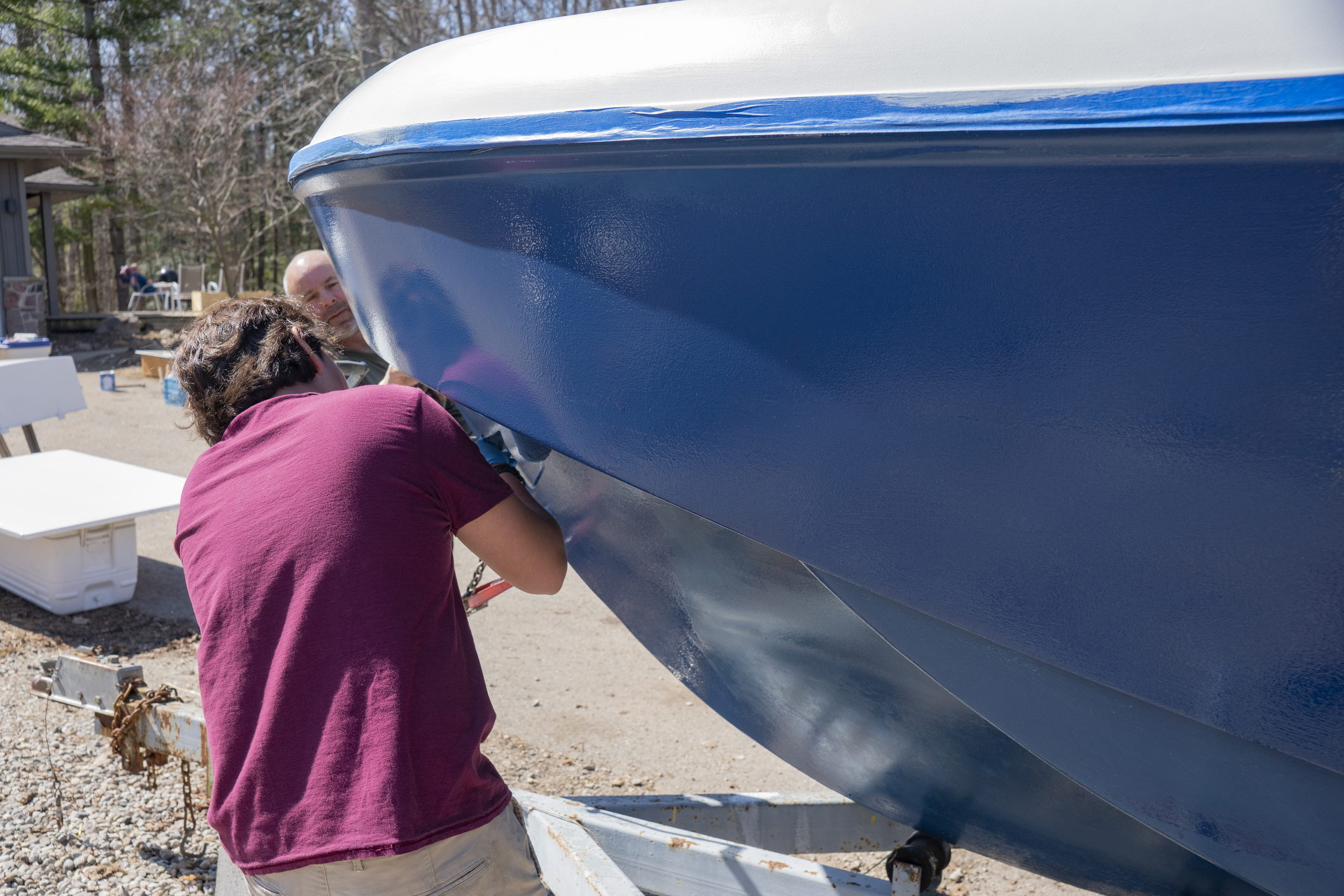
Boat owners often form deep bonds with their vessels, motivating them to restore rather than replace them. This commitment to preservation allows us to appreciate the enduring beauty of classic and antique boats. Plus, it's a budget-friendly option compared to purchasing new.
But before diving into boat refurbishing, it's essential to understand that restoring a boat requires considerable time, effort, and resources. This blog post will explain how to restore a boat, the pros and cons, and restoration alternatives.
The Pros of Restoring Your Boat
Let's discuss why people choose to restore their boats:
1. Cost Compared to Buying New
Aside from sentimental value, many people opt for restoration because it's cost-effective compared to purchasing a new boat . While material expenses can accumulate, they don't compare to the hefty price tags of brand-new boats. Restoration expenses primarily involve the cost of supplies and occasional assistance from a laborer for more challenging tasks.
2. Sense of Accomplishment and Pride
Building and restoring your boat creates a unique masterpiece tailored to your style and preferences. Your one-of-a-kind creation will be a testament to your dedication and craftsmanship – a vessel built with your own two hands.
3. Develop New Skills or Improve Old Ones
Every restoration project is an opportunity to learn valuable boat skills! Throughout your journey, you'll gain practical knowledge about mechanics, parts, and additional information needed to complete your project.
The Cons of Boat Restoration
Restoration projects can be demanding, and many sailors are hesitant to commit. Several factors influence people's decision not to undertake these types of projects:
1. Time and Effort
Restoring a boat can be seriously labor-intensive! Restorations require a significant time commitment, as you must allocate several hours. Many people find long-term restorations peaceful and satisfying. However, others find the pressure to complete it before the season begins overwhelming.
2. Unknown Challenges
You'll inevitably encounter unforeseen challenges. For instance, depending on your boat's make, model, and year, the manufacturer might not even sell that part anymore – meaning you'll have to get creative. If you expect the unexpected, you'll overcome any challenges!
3. Liability Concerns
In the unfortunate event of an injury, you'll likely bear responsibility for any resulting damages. Additionally, note that the quality of your craft can impact your boat's warranty and cause potential insurance complications. For this reason, it's best to hire a professional if you're unsure how to restore boat parts.
How to Restore Boat Accessories and Parts
Before you begin restoring, it's essential to have your vessel surveyed by a professional. This helps uncover hidden problems lurking beneath the surface (pun intended). In addition, doing so saves you time, money, and headaches.
Next, make sure to clean every nook and cranny. This step might seem counterintuitive but will benefit you in the long run. Cleaning removes obstructions and makes inspection easier. You should also remove any unnecessary hardware and finishes.
Now it's time to carefully plan your restoration, making a list of materials you need and the order in which you'll tackle tasks. Once you're ready to begin, start with essential structural repairs like fixing holes, leaks, or rot. This includes inspecting, repairing, or replacing weakened parts.
The next step is to repair all lines and sails . Then, decide whether engine repairs or replacements are the way to go. Once you restore the major components, it's time to sand, seal, add finishes, and replace hardware. Then, you can address interior elements like floors and seats.
Finally, test everything on both land and water to ensure it functions as it should. We also recommend creating a maintenance plan to ensure your hard work stays at its best.
Additional Tips for Boat Restoration
If you're up for a rewarding restoration project, consider checking out repossessed boats available for purchase online or at boat lots. These are significantly more affordable than their new or used counterparts. Additional alternatives to boat restoration include buying a used vessel or hiring a crew to restore a boat.
Here's another money-saving tip: Consider purchasing upcycled or repurposed parts instead of brand-new ones. Not only will you save money, but you'll be breathing new life into old pieces.
Lastly, you'll want to document your progress with photos and notes and test everything you do. This helps you keep track of your work and ensures you have proper insurance company documentation.
Wrapping Up Boat Restoration Advice
Refurbishing a boat can be a rewarding and uniquely challenging experience. And trust us when we say there's no greater satisfaction than seeing your vision come to life. If you are considering boat restoration, we hope this article points you in the right direction! Good luck, captain.
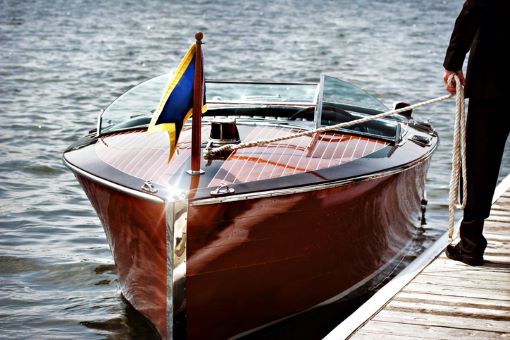
Join Our Newsletter!
Get community news, buying bargains, and how-to guides at your fingertips.
- Paddle Board

How to Restore a Boat: Complete Guide for Beginners
Boating offers you a fun way to spend time out on the water with family and friends. There are dozens of boat brands and designs with purposeful builds to suit any boating activity. From fishing in the flats in the estuary to taking on the waves in the open ocean, there’s a boat designed to do anything on the water.
While boating is fun, it’s an expensive hobby. Buying a new boat is as serious as purchasing a new car, and you need to carefully consider the right model and brand to match your motoring style. It’s the same thing with boats; you need a model that offers you the best performance for what you want to do out on the water.
Unfortunately, some decent boats can cost you north of $35,000 for an entry-level model. At the minimum, you’re looking at spending $15,000 to $20,000 on a new boat. So, it makes more sense to buy a used model, right? Going with a pre-owned boat can save you thousands on the costs of your vessel.
Just like cars, you get used boats in a variety of conditions, from those that need huge amounts of repairs to those that only need a few touch-ups. However, chances are you’re going to need some level of refurbishment to your boat, regardless of the age,
Refurbishing a used boat can save you thousands on the price tag, especially if you have the handy skills to do it yourself. This guide gives you everything you need to know about how to restore a boat.
Plan and Set Up Your Workspace
If you’re purchasing a boat, make sure you have a dedicated space on your property for the restoration. Storing the vessel in a shipyard at the marina means you’ll have to waste time traveling between the shipyard and your home when restoring the boat.
That’s time you could be putting into the work, and having your workshop close to where you live saves you hours of time, getting the project finished in the fastest time possible. When you have a workspace at your home, you have access to outlets and better security for the boat and your tooling.
Workspace Requirement
If you don’t have the space to store the boat at your home, look for suitable premises you can rent close to where you live. We recommend finding a place with an overhead cover allowing you to work in all weather conditions, and don’t forget the need for power outlets for your tools. You’ll also need access to water on the property and security for the boat.
Basic Restoration Tools
You’ll need to make sure you have the following restoration items and tools before starting your project.
Try and get two if there are two of you working on the project. The boat’s sides are steep when mounted on the trailer or at the yard. The ladder helps you climb in and out of the vessel and reach the high spots on the sides from the ground.
Flexible Hoses
These hoses are easy to coil up and move around the boat.
Personal Protection Equipment (PPE)
You’ll need respirators, surgical gloves, and safety goggles for your protective gear. The respirator is critical when sanding away paint and fiberglass, keeping the particles out of your lungs.
Entertainment
Get yourself a Bluetooth speaker to play your favorite songs when working on your boat – it helps to pass the time on long restoration jobs!

Boat Inspection
When purchasing your boat, make sure you give it a complete inspection before making your final offer. It’s a good idea to have a professional inspect the boat for you and point out any problems before you make your purchase. The last thing you need is to discover damage or engine/electronics problems after paying the owner.
Talk to the Seller
Before calling the pros, ask the seller if they have anything they want to disclose with their boat before handing it over to you. If you’re purchasing from a used dealer, ask the following questions to your agent before closing the deal.
- How did the previous owner treat the vessel?
- How did the previous owner store the boat?
- Is there any existing damage or repairs required?
- What are the service history and previous repairs done on the boat?
- How often did the previous owner use the boat?
- What maintenance did the previous owner do on the boat?
Restoring a boat is a big undertaking, especially if it’s in poor condition. Make sure you understand the task you’re taking on before you decide to buy the boat and make a huge mistake.
If you give up on the project halfway through it, you’re not going to make any money on the work you did to the boat. You might sit with it for a while before you find a buyer willing to commit to the restoration project, leaving you out of pocket.
Some repair jobs with boats just aren’t worth the hassle. The bigger the restoration project, the more money and time it takes to finish the restoration. Some of the major restoration problems to avoid include the following.
Wood looks fantastic on boats, providing a classic look and a wonderful aesthetic to the vessel’s finish. However, the issue with wood is that it rots. If the previous owners didn’t maintain the wood, you could be in for a serious, costly replacement when refurbishing the boat.
Wood finishes are more popular on older boats, so the chances are that you’re going to need to remove and replace all the rotted wood, and that can get expensive. However, if you find a boat with mildly deteriorating wood finishes, it may be possible to salvage it with the right tools, materials, and care.
If the boat is 25-years old or older, then the chances are that damage to wooden components on the vessel will have some rot in them. Almost every wooden boat would experience wood rot at some stage, especially if the owner didn’t take the necessary care of the vessel.
Some of the older boats may have a “cored” hull. Purchasing a boat with this design is a mistake. Eventually, you’re going to have to remove and refurbish the core, and that’s going to be a huge hassle in your project, taking up hours of your time. The coring in these older models typically features balsa or thin plywood.
If you’re dealing with someone on a prospective older model, it’s a good idea to do some research online into that specific model. If it has coring, then rather walk away and look for something else.
Some of the boats don’t have a cored construction, and that has that one advantage when it comes to the complexity of the restoration, and the time it will take. Other components on the boat that are at risk of developing rot include the transom, seats, floors, and stringers.
While wood offers an impressive finish, most modern boats replaced this material with fiberglass or aluminum over the last two or three decades. The paint on the boat comes from the factory looking fantastic. However, a few years in the sun at the marina will take the luster out of the paint job.
Most old boats come with a gel coat direct from the factory, adding extra protection to the paint. Some of the earlier models may also feature a metal flake, which has an impressive look. If you’re completing a restoration, the paint will probably be the most expensive part of the process.
So, we don’t recommend painting the boat after you finish the restoration if you want to save money on the job. It’s a better idea to try and restore the factory finish as best as possible.
If the old gelcoat needs some attention, you can buff it out and make the boat look 10% to 20% better with this simple task, saving you the paint costs. If the gel coat is repairable, don’t waste your time and money on repainting the boat.
The motor is another considerable point of failure when purchasing a boat. First, make sure that the engine is still in production. If you’re buying a boat from a manufacturer that went under, then the chances are those spares are not available anymore. As a result, you’ll have to spend hours digging through wrecks at the local salvage yard to find what you need for the job.
If you have the chance, purchase a boat from a person that works on the engine themselves. These people will take the best care of the motor. If that’s not an option, look for boats with the most extensive service history possible.
Ask the owner to start the motor, and ensure that it runs correctly. If you have no experience with boat engines, find a mechanic that can give the motor a once-over inspection and tell you about the problems you need to fix.

Get a Second Look
Buying boats and motors aren’t a good idea if you don’t have any experience with boats and don’t know what you’re looking at during the inspection. On the surface, the boat might look fine, but there might be a slew of problems with the vessel under the surface.
The last thing you need is to buy a lemon and never finish the restoration. So, it pays to have a professional assessor look over the boat before you close the deal. The professional will run over the electrical and mechanical components of the boat, the wiring, and the engine to point out any problems with the vessel.
While it’s easy to see the exterior damage and damage to the boat’s body, the stuff out of sight is a real concern, and the professional assessor will remove this risk from the deal.
Create a Master Restoration List and Prioritize Tasks
After you finalize your purchase and have the boat assessed by a professional, it’s time to plan the restoration. Planning doesn’t take much time, and it will end up saving you plenty of time and money in the restoration process.
You’ll need to create a master priority list for the restoration tasks involved with the project. When creating your priority schedule, ask yourself the following questions.
- What work do I need to do to make the boat run safely?
- What work do I need to do to get the boat to float?
- What damage is cosmetic, and what damage is structural?
- What are the vital tasks to complete, and what would be nice to have?
- Do I need specific workshop conditions for this restoration?
These questions help you form the framework around the restoration project. Organize your list, starting with the most labor-intensive tasks at the top of the list. Make sure you focus on safety and never work on the boat without wearing the correct safety gear.
Create a Restoration Calendar
After you finish prioritizing the tasks involved with your project, it’s time to map out your schedule on your calendar. A goal is only a dream until you put a timeline to it, and this phase of your planning is as critical as the prioritization phase.
Set realistic goals for completing each of the tasks, and stretch yourself to make the project challenging. If you don’t hit your timelines, that’s fine; just make sure you’re focusing on the quality of your work at all times.
If you make your purchase in October, you could set a date for having your boat in the water by the following July. That sounds like a great way to start the summer, right? With this goal in mind, you’ll need to complete the preliminary work involved with the project by June and leave the aesthetic repairs for the fall after the summer ends.
Taking the time to plan out your project relieves the stress and uncertainty involved with the restoration. With the right milestones in place for your project, you’ll find you feel more confident, with the momentum of your achievements pulling you through the project’s timeline to a successful restoration.
Some boat owners find that the length of the project becomes a chore to manage, and they lose interest over time. When you plan the project carefully, you’re consistently moving through it, and you know what to expect. Sure, there might be setbacks, but you’ll eventually achieve your goal with the restoration with the right planning.

How to Restore a Boat – Checklist
By now, you should understand the basics of what you need for a boat restoration project. It’s no simple task, and you can expect to spend anywhere from a year to two years or more on the restoration, depending on the condition of your boat.
However, with the right planning and execution, the time will fly by, and before you know it, you’ll be out on the water. We decided to give you this checklist to help you navigate your way through your boat restoration project.
- Make sure you have an adequate workspace for the project.
- Take an inventory of your materials and tooling.
- Clean the boat properly and remove all dirt before you start the project.
- Remove all organic material and water from the boat to prevent mold and pest infestations.
- Inspect the boat and identify any problems with the exterior.
- Contact a boat inspection service and have them go over the boat to confirm the final issues involved with your restoration project.
- Drain the fuel tank and remove the engine from the boat.
- Drain the gear case of the old oil.
- Remove old hoses and belts on the motor and replace damaged parts,
- Check through-hull fittings and ensure they have tight seals. Replace any perished seals.
- Check the seacocks to ensure they are in working order. Replace any damaged parts.
- Inspect the hull of the boat for signs of any cracks.
- Check for cracks in the fiberglass around fittings and fixtures.
- Ensure that any load-bearing fixtures have the proper backing plate for support.
- Check the boat from top to bottom for any evidence or signs of wood rot.
- Check the deck flooring, bases of seats, and the ransom. Look for any signs of decay or deterioration.
- Strip the old and rotted wood from the boat. Replace it with marine-grade cored composites or plywood.
- If you’re having issues with a specific part of the restoration project, research it on YouTube.
- Look on forums if you have trouble working out any problems – the people there have loads of experience, and they are great resources for knowledge.
Wrapping Up
After you have all your planning ready and the boat set up in the workshop, it’s time to roll those sleeves up and get to work!
The biggest issue with any restoration is the time involved with the project. During the planning phase, map out the time you have to work on your project each week and outline the required finish date for your restoration.
Stay committed to your project, and don’t give up!

John is an experienced journalist and veteran boater. He heads up the content team at BoatingBeast and aims to share his many years experience of the marine world with our readers.
What to Do If Your Boat Engine Won’t Start? Common Problems & How to Fix Them
How to launch a boat by yourself: complete beginner’s guide, how to surf: complete beginner’s guide to get you started.
Comments are closed.
Type above and press Enter to search. Press Esc to cancel.

12 Tips For Restoring an Old Boat: Costs, Time, And Expert Advice
Looking at restoring an old boat chris mccall shares his expert advice..

So, you’re thinking of buying an old boat and bringing her back to her former glory? Awesome! Get ready for hard work and frustration culminating in an ultra-rewarding experience.
Buying and refitting an old sailboat is totally worth it! You won’t build a ton of equity in the boat, but you will know every square inch of that vessel, and the skills you gain will be invaluable.
My wife and I just finished the three-year refit of our 1972 Nauticat 38, Drifter, and now live aboard in Portland Oregon. As soon as the weather cooperates, we plan to take him (Yep, Drifter’s a fella) south and begin cruising full-time.
Feel free to check out our progress along the way and the results of our labor; you can find us on YouTube at YouTube.com/SailingAdrift

As an Amazon Associate, we earn from qualifying purchases. We also earn from other affiliate programs. This means we may receive a small commission on products purchased through our links at no extra cost to you.
Here are my top tips to help with your refit. Most I followed; some I wish I would have.
During The Buying Process
Get one of the best knives for sailing
Before you buy your perfect renovation project boat, here are a few tips to follow so you don’t fall short at the first hurdle.
#1 Know what you’re getting into

Refitting a boat is not an easy undertaking, and the single biggest thing keeping you from success is your tenacity to see it through. There are so many boats for sale, half-finished, because the undertaking was a lot more than their owners predicted. So….
#2 Plan, Plan, Plan.
This post is a great place to start. Start taking notes and tour as many boats as you can to gather ideas.
Talk to people that know. Read books. Read articles. Watch YouTube refit videos. Join social media groups focusing on refits, interior design, electrical systems, electronics, and boat makes you’re interested in.
I know the excitement is high but take a beat and make sure you make a logic driven decision based on research. There will be time to fall in love later.
#3 Make a core list of what you want from restoring an old boat

List the makes, lengths, characteristics, and price range and stick to it.
Then make a list of “nice to haves” and look for boats that have as many as you can find. If you go in with a clear understanding of what you want, and the deal breakers associated, it’s much easier to make a smart decision.
#4 Let someone else take the depreciation if you can
If you’re going to be refitting, you’ll be taking on plenty of depreciation as soon as you start installing your new electronics, appliances, and equipment, so minimize it by finding a boat where the previous owner has installed as much of this stuff as possible.
New engine? Awesome! Just upgraded all the navigation equipment? Great. New refrigeration unit? That helps. Let the last guy take the hit for 50 cents on the dollar.
Wondering how much sailboats cost ? Get a rough idea here.
#5 Buy cheap and pay cash if you can

Boats are not like houses. There isn’t nearly as much competition for boats that need a fair bit of work, because you won’t build a bunch of equity refitting like you would flipping a home.
Don’t expect to save tons of money refitting the boat yourself. You may save yourself a little but the real value is in the knowledge of the vessel and the skills you’ll gain.
So be ready to offer significantly less than asking, and don’t be surprised if they take it.
#6 Include a survey contingency and evaluate your prospective project from top to bottom
Do you have to hire a surveyor? No. But if you don’t, get ready to learn all you can about the process, and go over every square inch.
Know someone super knowledgeable you can ask to help? DO IT! Do not be afraid to walk away. Getting attached leads to bad decisions.
Now That You’ve Got Your Boat Restoration Project

So you’ve found your dream boat (to be!) Here are the next steps in restoring an old boat.
#7 Create a conservative budget
Take your number and pad it by 30%. It is all too easy to let costs get out of hand. Do your homework. The more knowledge that goes into that budget, the less costs will surprise you. Front end work pays huge dividends.
#8 Come up with an educated guess at the timeline in total work hours
And then multiply it by 4 (If you know someone who does this work a lot, take their estimate and double it; they are faster than you)!
Then break it down into phases to make the overall project less daunting. Tracking your working time in hours keeps focus and doesn’t punish you for life getting in the way.
I made a game of it by tracking my active work-on-the-boat time in hours with an app called Toggl. If you’re at all competitive, this really pushes you to keep getting out there to beat your weekly and monthly bests. Celebrate the small victories; don’t punish the shortcomings.
#9 Build in expandability, especially in your electoral system (think battery space)

Make sure you have spare breakers on your panel and room in your conduits. Always install pull strings. No one in the 70s could have imagined the electrical needs of the modern boat, so don’t make the same mistake.
Future you will thank you.
If you’re reinstalling batteries then check out the best lithium marine batteries . Aim for a slightly bigger bank than you think you’ll need! ⚡ We highly recommend BattleBorn LiFePO4 batteries ⚡
#10 Experiment with clever ideas for maximizing your space
Keep what works. Tweak what needs adjusting. And scrap the flops. This is your opportunity to get creative. Test your original ideas.
Copy what others have done on their boats and modify what you find when researching tiny living and RV sources. Sometimes building a custom solution is the right way to go, but they often don’t work as expected.
If a production solution is available, it may cost slightly more but will save you more in time and headache.
As an example, we built our own propane alarm and on/off solenoid because the commercially available one seemed so expensive (and I thought it was ugly).
Finding all the components took hours and hours, and when I had collected them all, I’d only saved about 25%. Installing everything, and getting the sniffer, switches, and solenoid to all work together, was a huge headache. If I could do it all again, I’d just buy that ugly thing.
#11 Stick with it

The paradox of a major boat refit is that with little exception, every job sucks. Some suck a lot. You’ll have your head below your ass, sanding for hours, crammed in a tiny locker, but the satisfaction you’ll feel at the end of the day makes it all worthwhile.
Over the weeks and months of our old sailboat restoration, I experienced periods of high motivation where working on the boat was the only thing I wanted to do.
Things like eating, sleeping, and my day job just got in the way.
Other times, making myself get out there was like getting a 6-year-old to eat peas: damn near impossible. Motivational ebb and flow is a natural part of any long undertaking, but you have to push through it and keep going.
Don’t be another person selling a partially refitted boat. STICK WITH IT!
#12 Use perfection as the unachievable goal that it is

Instead, focus on safety and functionality. The goal is to get out there and enjoy your hard work, not worry away over every imperfection. You’re the only one that will notice anyway.
You’re never going to actually finish the boat refit; there will always be items on the to-do list. Once she’s fully functional and safe, go enjoy her. You can work on the never-ending list as you go.
Refitting Drifter was one of the single most rewarding undertakings I’ve ever done.
We live aboard, so every day I’m surrounded by the fruits of our labor. While there are flaws, the good far exceeds the bad. I know every system, and every nook and cranny. Get out there and find your opportunity. In the end, you’ll be so glad that you did!
Conclusion: Tips For Restoring an Old Boat
If you’re lucky enough to find an old boat that’s still in good shape, then you’re well on your way to having a great time out on the water. With just a little bit of elbow grease and know-how, you can have your boat sailing like new again.
Thanks for reading and we hope these tips helped!
Wondering what it’s like to live on a boat on land in a boatyard? Give this article a read to prepare you!

Chris and his wife Kelly bought their 1972 Nauticat 38 in April of 2017, and in May of 2019 went full steam ahead with an extensive refit in the driveway of their home in Portland OR.
They splashed and christened Drifter in the summer of 2022 and moved aboard full-time that September.
They are awaiting a weather window to tackle the wild west coast of the United States and begin cruising full-time starting with Mexico and Central America with the intent of continuing west.
Find their whole refit adventure documented along the way at YouTube.com/SailingAdrift. Feel free to contact them directly with any thoughts and questions through their website: www.SailingAdrift.com or by emailing [email protected]
Similar Posts

Living Aboard a Trawler: How to Make Money

What Is The Cost Of Owning A Sailboat?

Today I Feel Brave

How To Tie A Sailboat To A Mooring Ball

How To Get The Internet At Sea When Sailing 2024

Sailing With A Baby: Essential Guide 2024
One comment.
Should be able to pay moorage before launching and make the rest of us look like vagrants with 3 kids
Comments are closed.

Sail Far Live Free
Tips for sailboat restoration.

Good Advice
I just bought a 1973 Pearson 30. The Atomic 4 is shot and needs to be removed, I know very little about engines. Any ideas on what I should do would be helpful. I understand that the A4 developed about 30hp and I'm thinking a 16hp diesel would probably suit my needs(I sail on a 43,000 acre lake). Any thoughts?
16 HP sounds about right. The atomic 4 usually has a small propeller and higher RPM than diesels, so check the max diameter prop you can fit with 10-15% of clearance top and bottom. You may want less of a reduction gear. Also consider engine and fuel weight. "The propeller handbook" by Dave Gerr is a good resource. Most older boats have small props that can't make use of higher HP.
Post a Comment
Popular posts from this blog, top 10 favorite affordable bluewater sailboats, go small and go now 5 pocket cruisers to take you anywhere.

Escape to the Sea: How to get from the Great Lakes to the Caribbean


Boat Refitting (Restorations)
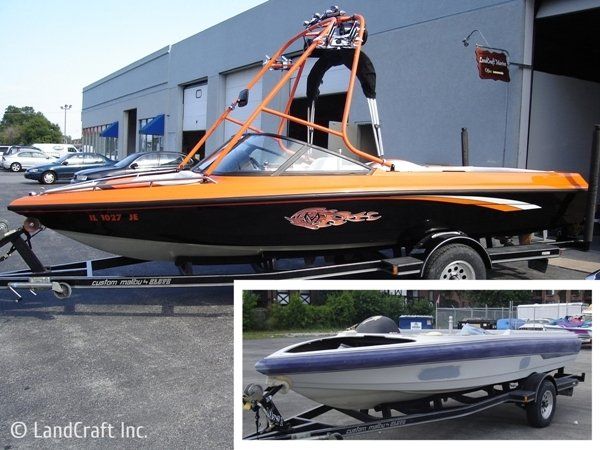
Slide title
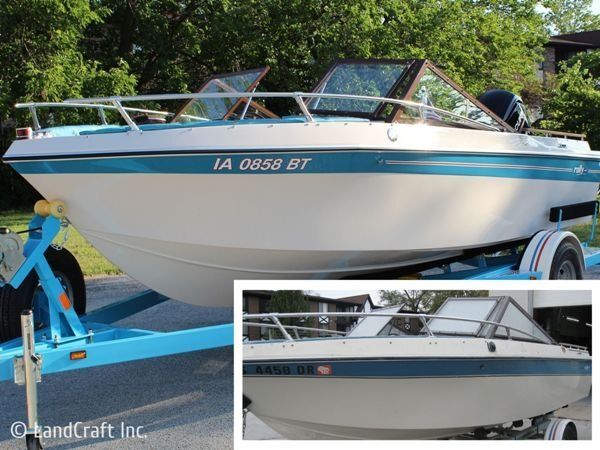
Check out pictures of our work!
Tell us about your repair needs.

Copyright © 1978-2024 LandCraft, Inc.
All Rights Reserved. Unauthorized Use of Pictures and Content is Prohibited.
Boat & Jet Ski Repair
Boat Restorations
Fabrications
RV Fiberglass Repair
Industrial Fiberglass
Fiberglass Vehicle Services
Other Fiberglass Services
Insurance Claim Handling
PHOTO PORTFOLIOS
Boat Repair Pictures
Boat Restoration Pictures
Fabrication Pictures
RV Repair Pictures
Industrial Repair Pictures
Other Fiberglass Pictures
LandCraft Shop Tour
Row4Kids Event Pictures
USEFUL LINKS
Career Opportunities
News & Press
Boater Resources
COMPANY INFORMATION
LandCraft Inc., Established 1978
1604 Caton Farm Rd.
Lockport IL 60441
(708) 385-0717
Privacy l Terms l Accessibility

"LandCraft" is a trademark of LandCraft Inc registered in the U.S. Patent and Trademark Office and may be registered in certain jurisdictions.
Web design by SmallBee.com
- New Sailboats
- Sailboats 21-30ft
- Sailboats 31-35ft
- Sailboats 36-40ft
- Sailboats Over 40ft
- Sailboats Under 21feet
- used_sailboats
- Apps and Computer Programs
- Communications
- Fishfinders
- Handheld Electronics
- Plotters MFDS Rradar
- Wind, Speed & Depth Instruments
- Anchoring Mooring
- Running Rigging
- Sails Canvas
- Standing Rigging
- Diesel Engines
- Off Grid Energy
- Cleaning Waxing
- DIY Projects
- Repair, Tools & Materials
- Spare Parts
- Tools & Gadgets
- Cabin Comfort
- Ventilation
- Footwear Apparel
- Foul Weather Gear
- Mailport & PS Advisor
- Inside Practical Sailor Blog
- Activate My Web Access
- Reset Password
- Customer Service

- Free Newsletter

Catalina 270 vs. The Beneteau First 265 Used Boat Match-Up

Ericson 41 Used Boat Review

Mason 33 Used Boat Review

Beneteau 311, Catalina 310 and Hunter 326 Used Boat Comparison

Tips From A First “Sail” on the ICW

Tillerpilot Tips and Safety Cautions

Best Crimpers and Strippers for Fixing Marine Electrical Connectors

Thinking Through a Solar Power Installation

Polyester vs. Nylon Rode

Getting the Most Out of Older Sails

How (Not) to Tie Your Boat to a Dock

Stopping Mainsheet Twist

Fuel Lift Pump: Easy DIY Diesel Fuel System Diagnostic and Repair

Ensuring Safe Shorepower

Sinking? Check Your Stuffing Box

The Rain Catcher’s Guide

What Do You Do With Old Fiberglass Boats?

Boat Repairs for the Technically Illiterate


Boat Maintenance for the Technically Illiterate: Part 1

Whats the Best Way to Restore Clear Plastic Windows?

Giving Bugs the Big Goodbye

Galley Gadgets for the Cruising Sailor

Those Extras you Don’t Need But Love to Have

What’s the Best Sunscreen?

UV Clothing: Is It Worth the Hype?

Preparing Yourself for Solo Sailing

How to Select Crew for a Passage or Delivery

R. Tucker Thompson Tall Ship Youth Voyage

On Watch: This 60-Year-Old Hinckley Pilot 35 is Also a Working…

On Watch: America’s Cup

On Watch: All Eyes on Europe Sail Racing

Dear Readers
- Boat Maintenance
- Sailboat Reviews
How to Restore Teak Wood on Boats
Probably nothing can make or break the appearance of a fiberglass boat more quickly than the appearance of the exterior teak trim. Contrary to popular belief, teak is not a maintenance-free wood that can be safely ignored and neglected for years at a time. Though teak may not rot, it can check, warp, and look depressingly drab if not properly cared for.
Although it is not immune to neglect, teak is incredibly resilient, and can be brought back to life after remarkable amounts of abuse. Therefore, there is no excuse for drab, ugly exterior teak on any boat.
Unlike other woods used for exterior trim, the grey weathering of teak rarely extends very far below the surface of the wood. Instead of the tedious scraping and sanding essential to restore the weathered surface of, for example, mahogany, a fairly simple chemical cleaning usually suffices to bring even the worst of grungy teak back to a semblance of its original glory.
However, chemical cleaning can be pretty tough on the wood. Most chemical cleaners rely on a caustic and/or an acid to clean and bleach the surface of the wood. Inevitably, these powerful cleaners gradually erode the surface, softening the pithy portions of the grain and leaving raised ridges along the tougher growth rings of the wood.
Chemical cleaners can, however, almost miraculously clean weathered teak. The four-color brochures published by teak care product companies do not exaggerate when they show bright tan teak next to grey ugly teak, claiming that only a few minutes work will transform the dirty to the clean.
For best results, however, you should never let your teak trim get to the point that such drastic measures are called for: and once you get it back to like new condition, you should be prepared to put in the time and effort required to keep it in that condition.
Cleaning Teak on Boats
If your teak is dark brown from old, oxidized dressing, or weathered grey from neglect, the first step is a thorough cleaning.
The severity of the discoloration of the wood will determine the severity of restorative measures required. Because cleaners containing acids and caustic are hard on the wood, you should try to use as mild a cleaner as will do the job, even though it may take some experimentation and a few false starts to come up with the right combination of ingredients.
The mildest teak cleaner is a general purpose household powdered cleaner such as Spic n Span . A concentrated solution of powdered cleaner and vigorous scrubbing using a very soft bristle brush or, better yet, a 3M pad, will do a surprisingly good job on teak that is basically just dirty. Don’t scrub any harder than you have to, and always scrub across the grain. Every time you scrub the teak, you are removing softer wood, which eventually results in an uneven surface that raises the grain. Regularly using a firm brush to scrub with the grain will lead to problems down the road.
The advantage of a gentle scrub using mild cleaners is that while it is more work for you, it is by far the most gentle for your teak. Since you are likely to have some powdered detergent around, always try this method before going on to more drastic measures.
Simply wet down an area with water, clean with the detergent solution, rinse with fresh water, and let it dry. If the wood comes out a nice, even light tan, youre in luck. If its still mottled or grey, a more powerful cleaner is called for.
The next step is a one part cleaner specifically designed for teak, or the equivalent. These can be either powdered or liquid. Most consist of an abrasive and a mild acid, such as phosphoric acid or oxalic acid. They are more effective in lightening a surface than a simple detergent scrub. Many household cleaners like Barkeeper’s Friend contain oxalic acid.
If the cleaner contains acid, however, some care in handling must be taken. It is advisable to wear rubber gloves and eye protection using any cleaner containing even a mild acid.
The cleaning procedure with most one-part cleaners is the same: wet the teak down, sprinkle or brush on the cleaner, scrub down, and rinse off. Be sure to rinse well.
Even badly weathered teak should come up reasonably well with a one part cleaner. When the wood dries, it should be a uniform light tan. If some areas are still grey, a repeat cleaning should do the job. If, however, the teak is still mottled or discolored, the time has come to bring out the heavy guns, and with them the heavy precautions.
The two part liquid cleaners are, with only a few exceptions, powerful caustics and acids which do an incredible job of cleaning and brightening teak, but require care in handling to avoid damage to surrounding surfaces, not to mention your own skin.
While the instructions on all two-part cleaners are explicit, a reiteration of the warnings on the labels is useful.
Adjacent surfaces, whether gelcoat, paint, or varnish, must not be contaminated by the cleaners, most of which can bleach gelcoat or paint, or soften varnish. Constant flushing of adjoining surfaces with water while cleaning is usually adequate, but masking off of freshly painted or varnished surfaces may be more effective.
Hand protection, in the form of rubber gloves, is absolutely essential. In addition, do not use these cleaners while barefooted, and preferably not while wearing shorts. Eye protection is also a good idea. The chemical burns which can result from some cleaners can be disfiguring and painful. If the product label has the key words caustic, corrosive, or acid, wear protection and avoid splashing!
There is slight variation in the instructions for the various two-part cleaners, but the general principles are the same:
1. Wet the teak down;
2. Apply part one (the caustic), spreading and lightly scrubbing with a bristle brush;
3. When the surface is a uniform wet, muddy brown, apply the second part (the acid), spreading with a clean bristle brush;
4. Apply and spread enough of the acid to turn the teak a uniform tan;
5. Rinse thoroughly, and allow to dry completely.
It is fairly common to use almost twice as much of the second liquid (the acid) as the first, in order to get uniform light color. For this reason, its a good idea to buy an additional bottle of the second solution, when it is available. Despite the fact that most manufacturers package two-part cleaners in kits of two equal-sized bottles, they usually make additional bottles of the second part available.
Unless the instructions require it, do not rinse off the muddy brown surface of the teak after it has been treated with the caustic. You will be washing unneutralized, corrosive liquid all over the rest of your boat. Thorough neutralizing with the acid wash will minimize problems.
Surface Preparation for Finishing
A freshly cleaned teak surface is a joy to behold, but it wont stay fresh, clean, and light for long if you don’t take care of it. In fact, the surface will begin to oxidise instantly as it dries. The sooner you complete treatment after cleaning, the better.
Teak, like many woods, has grain which varies a great deal in hardness, even within the same piece of wood. Over time, even a simple scrubbing with detergent will wear away the softer portions of grain, leaving ridges of harder grain. The irregularity of such a surface merely accelerates the rate at which it gets dirty again.
Before getting out the sander to smooth out the grain, however, look at both the function and construction of the wood youre dealing with.
If the teak surface youve cleaned is teak-faced plywood, theres a good chance that a thorough sanding to smooth the surface will go right through the layer of veneer, effectively ruining the piece. On the typical fiberglass sailboat, veneered or plywood components include conpanionway drop boards, hatch tops, and sometimes cockpit seats and soles. Before sanding any of the parts, examine them carefully to see if they are solid lumber or veneer. Since exposed edges of plywood are sometimes covered with veneer strips to make them look like solid lumber, you must look pretty closely.
Although decks are usually solid lumber, they also can present problems. If the decking is much less than 1/2″ thick, and has plugged (bunged) fastenings, sanding out the grain ridges may sand away enough material to sand through or loosen the bungs, exposing the fastenings.
Even when bungs are set in epoxy, they require a counterbore at least l/8″ deep to hold them in place.
Even if the grain is quite pronounced on laid teak decks, you may be better off living with a cleaned irregular surface than opening Pandoras box by trying to create a perfectly smooth surface.
On other solid teak items such as handrails, toerails, and Dorade boxes, thorough sanding of the chemically cleaned surface before treating with a sealer will result in a much more attractive surface.
Do not, as we have seen many times, attempt to restore badly weathered and grey teak by sanding before chemical cleaning. Chances are that you will quickly discover that a discouraging amount of sanding is involved, and you will end up using a chemical cleaner in any case. Sanding both before and after treatment is a waste of effort, and is likely to remove more wood than is necessary. On teak with pronounced surface irregularities, it could take forever to sand them out to get a uniform surface color, while chemical cleaning will quickly lighten even the deepest gouges or grain defects.
Wait until the cleaned teak is thoroughly dry before sanding or applying teak dressing.
Sanding of cleaned teak is not always required, particularly if the surface is to be treated with an oil-type dressing rather than a gloss finish such as varnish. Surface irregularities show far less with the matte finish of teak oils.
Granted, perfectly smooth teak is likely to be more even in color, and some esthetic sensibilities are offended by a surface showing pronounced grain pattern. From a simply functional point of view, however, irregularities are unimportant except in terms of simplified cleaning in the future.
Unless you intend to put in the effort required to maintain your teak between major cleanings, sanding the teak smooth is a waste of time. The next chemical cleaning will simply repeat the grain-raising cycle, requiring another sanding.
If you swear youre going to keep the teak up, however, a good sanding will enhance the woods appearance.
The safest tool for general sanding is a high speed orbital sander such as the Makita B04510. If you use successively finer grades of aluminum oxide sandpaper, and don’t slow the machine down by applying pressure, it will leave a smooth, relatively swirl-free surface suitable for finishing with a teak dressing.
Inexpensive, heavy, slow-speed orbital sanders should be avoided. They leave telltale swirl marks on the surface which are accentuated by the application of finish, and their sanding is generally too slow.
Never use a disc sander on a surface to be finished bright (oiled or varnished), unless you are one of the few experts who really know how to handle this potentially destructive tool.
The same goes for the belt sander. It is perhaps the most efficient tool for smoothing large, flat surfaces, but is capable of doing heartrending and irreversible damage in the hands of the inexperienced. For decks and hatches of solid lumber, the belt sander is the answer – but only if you are thoroughly experienced with the tool, and only with a heavy duty machine that has a large sanding surface.
When power sanding, always mask off adjacent areas of gelcoat. Even lightly touching a polished gelcoat surface with a sander will damage it. The same rule applies for hand sanding.
Remove masking tape immediately when sanding is completed. Even leaving the tape on overnight on an exterior surface is likely to make it difficult to remove. Tape adhesive residue can be removed with a mild solvent, such as alcohol, and gentle rubbing with a coarse cloth, such as a piece of toweling.
After sanding, remove sanding dust from all surfaces with a vacuum cleaner. If electricity is not available, sweep thoroughly with a dusting brush or a large paintbrush which will no longer be suitable for painting because it is full of sanding dust. Obviously, you don’t sacrifice your best badger hair brush for this. The cheapest bristle brush will do fine.
Applying a Finish to the Teak
The final step in rejuvenating an exterior teak surface is the application of a dressing or sealer to retain for as long as possible the appearance of the freshly prepared wood.
Our own preference is a dressing which does not darken the wood. For our top-recommended sealer check out the six-month results of our ongoing test of wood finishes . For really durable finishes on teak trim, or caprails, there are a variety of options. Search under wood finish, or teak treatments to turn up our most recent wood finish test results . This article on varnishing also has some good tips.
The choice of a teak dressing is, however, as much a matter of esthetics as function. Look around at the boats whose exterior teak looks best to you, and query the owners about the products they use.
A major caveat is in order. No exterior teak finish lasts very long. For optimum results, monthly application of dressing is required, with a good scrubbing with detergent and water before applying a fresh coat. Youre kidding yourself if you think a once-a-year treatment will keep your teak looking good.
Do not attempt to use household-type furniture oils for exterior teak. They will not stand up to the weather.
Whatever teak dressing you use, be neat in applying it. Slopped-about teak dressing may not show when it first gets on fiberglass, but it inevitably darkens with age, leaving stains that look just as bad as varnish spills, and are just about as hard to remove. Clean up spills and overruns immediately with a rag dipped in mineral spirits unless another solvent is specified by the manufacturer of the dressing.
Masking tape is not particularly effective in protecting surfaces from spills of teak dressings, as the viscosity of most dressings is so low that they simply bleed under the edge of the tape. The answer is careful application, and careful cleanup.
Maintaining Your Teak
Your job isn’t over when the last coat of dressing is applied. To look its best, exterior teak needs frequent attention. With a boat used in salt water, frequent washdowns with fresh water will prolong the life of the dressing, but scrubbings with salt water and a brush will reduce it.
Horizontal surfaces, such as hatch covers, will require more frequent coats of sealer than vertical surfaces, such as companionway dropboards. High traffic areas like a teak cockpit sole will require the most attention of all, but are the easiest to scrub and retreat, since sanding is not usually desirable.
If all this sounds like a lot of work, thats because it is. That explains why the exterior teak on so many boats looks so grubby.
It is still, however, less work than maintaining a varnished exterior teak surface – a lot less. If you really think you want varnished teak, try maintaining a clean oiled surface for a season first.
Few things look better on a boat, particularly a white on white fiberglass boat, than well-maintained exterior teak trim. An owner who neglects exterior wood is likely to be the same owner who rarely changes the oil in the engine, and who rarely bothers to put on the sail covers after a days sail when he expects hes going sailing again tomorrow.
Owning a boat isn’t all play. A boat is a major investment, and like most investments, the more attention you pay to it, the more it will return. The time you put into maintaining your exterior teak is well invested. The return is not only pride of ownership, but dollars in your pocket when the time comes to sell the boat.
RELATED ARTICLES MORE FROM AUTHOR
Well written and informative We just bought a 21 ft 1991 celebrity Cuddy and it’s like an antique with beautiful teakwood adorning this old girl! The boat has been well taken care of but teak is teak thanks for the tips Any tips on removing the discoloration on bottom after a few rides in the river I tried washing off but won’t rinse off I guess I waited too long to rinse Is there something you can put on the bottom so that dirt doesn’t stain
Starbrite hull cleaner
What is the caulking between the teak strips (usually black) I would like to replace some that has come out.
Jimbo. There are a few different types, each with their own characteristics. Here is a test that should help you find one that works for you. https://www.practical-sailor.com/boat-maintenance/paints/teak-deck-caulks-rated-for-durability-and-resistance-to-chemicals
That’s really nice post. I appreciate your skills. Thanks for sharing.
I really enjoy the simple yet concise steps on how to restore teak wood on a boat. As teak wood outdoors is exposed to different pollutants, it can require to keep it well-maintained as long as it is used. Thank you so much this information was certainly helpful
This was certainly the best written and most informative article I have read on the subject. I recently bought a sailboat with poorly maintained exterior teak, and now I have a solid plan going forward. Thanks
Enjoy your boat comments. Would appreciate your best idea for a older boat to be sold. I have a 43’Gulf Star Trawler,well kept,that l would like to sell How would you go about this? Will appreciate your comments.
LEAVE A REPLY Cancel reply
Log in to leave a comment
Latest Videos

Hans Christian 41T – Boat Review

Seven dead after superyacht sinks off Sicily. Was the crew at...

What’s the Best Sailboats for Beginners?

Why Does A Sailboat Keel Fall Off?
Latest sailboat review.

- Privacy Policy
- Do Not Sell My Personal Information
- Online Account Activation
- Privacy Manager
- 2024 BOAT BUYERS GUIDE
- Email Newsletters
- Boat of the Year
- 2024 Freshwater Boat and Gear Buyers Guide
- 2024 Boat Buyers Guide
- 2024 Water Sports Boat Buyers Guide
- 2024 Pontoon Boat Buyers Guide
- Cruising Boats
- Pontoon Boats
- Fishing Boats
- Personal Watercraft
- Water Sports
- Boat Walkthroughs
- What To Look For
- Watersports Favorites Spring 2022
- Boating Lab
- Boating Safety
- Ultimate Boating Giveaway

Easy Tips for Boat Restoration
- By Heather Steinberger
- Updated: February 10, 2020
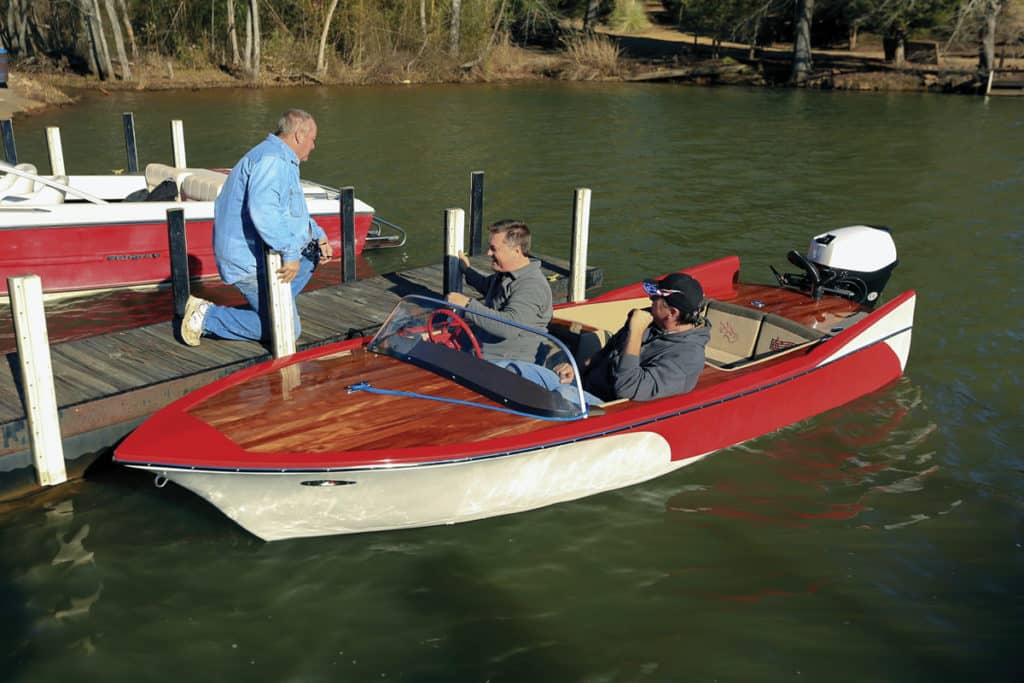
If you’ve got an aging or damaged boat that has sentimental value, you might be ready to tackle a restoration project. Here are 11 tips to keep in mind when restoring an older boat.
1. Take an inventory of your tools, and then roll up your sleeves and start. It’s that simple.
2. Clean the boat from stem to stern so you can see exactly what you have to work with.
3. Remove all the water, leaves and debris from the boat. Organic material is your enemy.
4. Identify what’s broken. Seat bases? Fiberglass components? The steering system? Will you need fiberglass boat restoration?
5. Remove the old fuel from the fuel tank, as well as the old oil from the engine and gear case.
6. Remove the old belts and hoses on the engine and replace them with new ones.
7. Check the through-hull fittings to make sure they are still properly sealed. Also check the seacocks to make sure they are in working order. Replace any broken ones.
8. Look for cracking and crazing in the fiberglass around fixtures and fittings, such as cleats. Make sure load-bearing fixtures have a proper backing plate.
9. Old boats may have lots of rotting wood. Check the deck floor, seat bases and especially the transom for sagging, rot or decay. Strip old wood out of the boat and replace it with marine-grade plywood or a modern cored composite.
10. Go to YouTube and find at least three step-by-step DIY videos that say the same thing. These guys might not be “experts,” but they at least have experience.
11. Have a specific job in mind? Check out all of our content dedicated to DIY projects.
Boat refurbishing and boat restoration can be much more complicated than the tips above, but the checklist will allow you to work on basic exterior and boat interior restoration.
- More: diy projects , How-To , Used Boats
More How To

On Board With: Monique Richter

Grady-White Pulls off Its Largest Raft-up Ever in Vieques, Puerto Rico
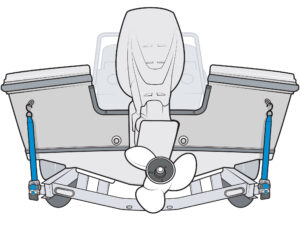
Installing Retractable Transom Straps
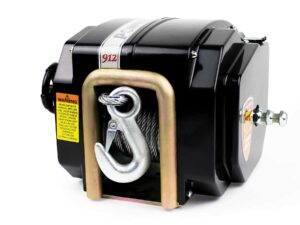
How to Choose a Trailer Winch

Boat Test: 2024 Hurricane SunDeck 2600 OB

Boat Test: 2024 Brabus Shadow 1200 Sun-Top

Inflatable Water Mats for Boaters

Boat Test: 2024 Monterey Elite 30

- Digital Edition
- Customer Service
- Privacy Policy
- Terms of Use
- Cruising World
- Sailing World
- Salt Water Sportsman
- Sport Fishing
- Wakeboarding
Many products featured on this site were editorially chosen. Boating may receive financial compensation for products purchased through this site.
Copyright © 2024 Boating Firecrown . All rights reserved. Reproduction in whole or in part without permission is prohibited.

DIY Boat Restoration: Tips and Tricks for a Budget-Friendly Makeover
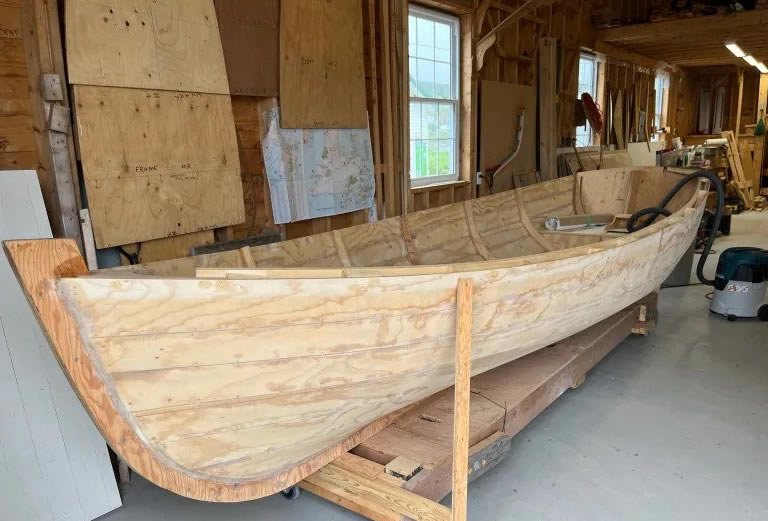
Restoring an old boat can be a rewarding and cost-effective way to breathe new life into a beloved vessel.
While it may seem like a daunting task, with the right tips and tricks, you can embark on a DIY boat restoration project that’s easier on your wallet and more satisfying than you might expect.
Helpful Boat Restoration Guides
1. set clear goals, 2. create a detailed plan, 3. prioritize safety, 4. do your own research, 5. salvage and recycle, 6. budget-friendly materials, 7. diy fiberglass repairs, 8. refinishing and painting, 9. upholstery on a budget, 10. routine maintenance.
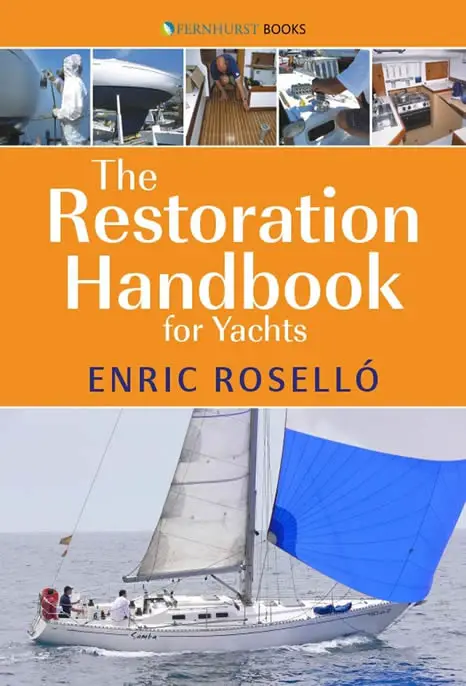
Boat Restoration Guide
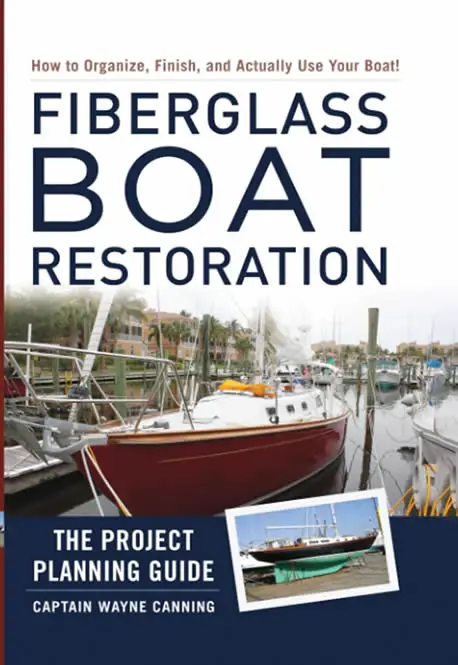
Fiberglass Boat Restoration Guide

Metal Shape Welding Instructions For Boat Building
10 Tips To Make Boat Restoration Simple
In this guide, we’ll share valuable insights and cost-saving strategies to help you navigate your boat restoration journey with confidence.
Before you dive into your boat restoration, determine the scope of your project.
Are you looking for a complete overhaul or just some minor repairs and cosmetic touch-ups?
Setting clear goals will help you avoid overspending and stay focused on your budget.
A well-thought-out plan is essential. Take the time to assess the boat’s condition and identify areas that require attention.
Create a checklist of tasks, including materials and tools needed.
A comprehensive plan will prevent impulse purchases and keep you on track.
Safety should always be a top priority.
Inspect the boat for structural issues, such as rot or damage, and address them first.
This ensures that your boat is safe for use, and you won’t compromise your safety while on the water.
Become a savvy researcher. Look for DIY boat restoration resources, such as books, online forums, and video tutorials.
Learning from others’ experiences can save you from common pitfalls and provide valuable insights.
When possible, salvage and recycle materials from your boat. Old hardware, wood, and even upholstery can often be refurbished or repurposed.
This not only saves money but also adds character to your project.
Shopping for materials doesn’t have to break the bank.
Consider marine-grade plywood alternatives, explore second-hand stores for décor, and compare prices from different suppliers to find the best deals.
Don’t forget to inquire about discounts or bulk rates.
Many small fiberglass repairs can be done at home.
Learning basic fiberglass repair techniques will save you money on hiring professionals.
Invest in a fiberglass repair kit and follow instructional videos to tackle small cracks or holes.
For cosmetic improvements, you can save money by refinishing and painting your boat yourself.
Proper sanding, priming, and using quality marine paint can make your boat look as good as new. Don’t forget to choose colors that won’t fade quickly under the sun.
Reupholstering your boat’s seats and cushions can be expensive. Consider buying discounted marine-grade vinyl and learning basic sewing skills to make your own seat covers.
Alternatively, look for deals on pre-made seat covers.
After your boat is restored, keep it in top condition by following a regular maintenance schedule.
Routine care will extend the life of your boat and prevent costly repairs in the future.
Embarking on a DIY boat restoration project can be both a labor of love and an excellent way to save money.
By setting clear goals, creating a detailed plan, and implementing these tips and tricks, you can transform your old boat into a source of pride without breaking the bank.
Remember that patience and perseverance are key to a successful boat restoration, and the satisfaction of sailing in a vessel you’ve restored with your own hands is truly priceless.
You may also be interested in reading our guide that shows you how to build a flat bottom boat and also our boat building plans .
Mick McGrath
Recent Content
518 Illustrated Boat Plans
518 boat plans for less than the price of your lunch! MyBoatPlans Reviews MyBoatPlans is a comprehensive collection of 518 boat plans, 40 videos and about 500 pages of boat building guides. I've...
Set Sail with Confidence: Essential Boat Safety Tips for All Ages and Furry Friends
Picture yourself gliding over crystal-clear waters, the wind in your hair, and the sun kissing your skin. The open sea offers endless possibilities for adventure, but before you hoist the sails, it's...
- Skip to primary navigation
- Skip to main content
- Skip to primary sidebar
- Skip to footer
Yacht Cruising Lifestyle
Everything fun you can do from your yacht
Boat Restoration Tips, Tricks, and Costs
August 29, 2021 by Martin Parker 6 Comments
Are you considering boat restoration as a cheap way to get on the water? While restoring a tired boat can save you money if you do most of the work yourself, there is a lot to consider and plan for if the costs are not to get out of hand.
Restoring a boat is a labor of love and something you are not likely to take on unless the boat concerned has some special meaning for you or you’re trying to save money. It is vital to understand that boats do not generally appreciate value unless they have some historical significance. Unlike car restoration, where collectors will pay big money for classic cars, the same is not true in the yachting world.
Don’t let that put you off, though. Bringing a boat back to pristine condition is hugely satisfying and something to be proud of.
Step-By-Step Process of Boat Restoration
Do You Need a Survey Before Commiting to Boat Restoration?
If you’ve recently purchased a boat, then you should have had a survey carried out already. If this is a boat you’ve owned for a while and intend to restore it, then a survey could be a good idea before you start. There are different types of surveys available, but the most common is the condition and value survey. The surveyor assesses the boat’s overall condition, reports any problems, and gives a market valuation.
You may need specialized surveys for the engine and other systems, and you can find accredited surveyors on the NAMSGLobal website or the Society of Accredited Marine Surveyors .
Clean the Boat Thoroughly
While it may seem an odd suggestion, thoroughly cleaning the boat has a practical purpose. While cleaning your boat, you can spot any problems you may have missed previously. Cleaning also gives you a base standard to start from and will save you time in the long run. Unblock all the drainage holes, thoroughly clean the bilge, and lift any hull access points to clean and inspect.
List Broken Items
Making a list of parts that need replacing or repairing is vital. Some areas of the boat will only be accessible during the restoration. Suddenly remembering a component that you needed to replace when the restoration is complete is not great! Completing this step enables you to plan the boat restoration in a logical order.
Check Any Through-Hull Fittings
Any fitting that penetrates the hull can potentially flood the boat, so these must be checked and repaired. All through-hull fittings use specialized sealants where they mate with the hull. Don’t skimp in this area, as you will regret it when the first leak appears.
Check the Seacocks Are Working
Seacocks have two purposes. Some are there to let water in, for engine cooling, for example, while others let water out, such as cockpit drains. In either case, it’s vital to ensure they are working correctly. The seacocks for cockpit drains and sinks etc., are usually closed at sea as the rolling movement of the boat can let water enter the hull. A seacock seized open has caused many boats to flood and sink.
Check the Condition of the Hull
What you are looking for will depend on the materials used to make the hull. A thorough inspection inside and out is required.
Fiberglass Hulls have a gel coat to protect the surface, but water may have penetrated the core if cracked and damaged. You can repair small areas of damage yourself, but extensive damage will need a professional eye. Pay particular attention to any fittings, such as cleats, stanchions, and chainplates, as cracking often occurs here. On older boats, the gel coat may have faded and stained. As long as the surface is good, you can restore it using a jetwash and readily available materials.
Wooden Hulls can suffer from rotten or dried-out wood if the protective coating is damaged. Repairing wooden hulls is a specialist skill that you shouldn’t attempt unless you are very confident. If the woodwork is sound, then resealing is a simple but time-consuming task.
The surveyor’s report should have highlighted all the damaged areas that he can see, but it depends on the type of survey you commissioned.
Check Load-Bearing Fixtures
Load-bearing fixtures such as cleats and chainplates put immense stress on the deck. Behind every load-bearing fixture, there should be a backing plate to spread the load and prevent damage. Make sure the backing plates are in place and in good condition.
Inspect Every Halyard, Sheet, or Control Line
The materials used in making halyards and sheets are very resistant to the damage caused by saltwater and the sun. But over time, they do weaken. Inspect all the lines carefully for any wear or fraying, and replace where necessary. Any lines in good condition can be washed in a very light non-bio detergent but ensure you rinse with plenty of fresh water.
Inspect Your Sails
Your sails work in a hostile environment, constantly exposed to UV light, saltwater, and extreme tension in heavy winds. Checking your sails during a restoration is a vital step to getting back on the water.
Check the following areas particularly:
Stitching: The sails stitching is the most common area affected by ultraviolet light from the sun. If you find anything, you should send the sail to a professional for repair.
Cringles: A cringle is stitched in to feed a sheet or line through at each attachment point. Check for damage to the metal or fraying of the stitching. Anything you spot here will most likely need professional attention from a sailmaker.
Sail Surface: Look out for fraying stitching, tears, and holes. Small holes can be repaired using repair tape or by sewing.
Sail Edges: Again, look out for fraying or loose stitching, but also signs of stretching.
Mold: Although mold won’t damage a sail, it looks unsightly, but luckily it is relatively easy to remove. Any sails that pass inspection should be thoroughly washed, dried, folded, and stored in a cool, dry location. Do not be tempted to put your sails away wet, as this encourages mold.
Engine: You can commission a separate survey for the engine, but if you have just lifted the boat out of the water to restore it, then a good service is probably the only thing required. For any boat that has been unused for a long time, it may be more economical to lift the engine out for a complete overhaul. Each situation will be different, and getting several quotes is a good idea.
If you decide to leave the engine in place, then at the very least do the following:
– Drain fuel tank
– Change engine oil
– Change gearbox oil
– Replace oil and air filters
Estimate the Cost of Boat Restoration
You’ve completed a complete survey of your boat, and it’s time to start the task of estimating the cost of the repairs. This is a critical stage and not one to rush. Finding the cost of replacement parts is relatively easy, so long as they are available. Older boats will be out of production, and the boatyard that built it may no longer be in business. A degree of improvisation and adapting similar parts may be required, which takes longer and costs more.
Many jobs may be labor-intensive, such as stripping back the Gelcoat or sanding down wooden decks. If you can do these jobs yourself, you’ll save a lot of dollars, but don’t exclude the cost of your time in the restoration cost. If you need to use skilled trades, then ask for quotes.
Once you’ve built a complete estimate of the cost of restoration, only you can decide if it’s feasible or not. If you hope to profit by selling the restored boat, this is a simple financial decision. A boat with some historical or sentimental value can make a choice more difficult.
Planning For Boat Restoration
Now you have a good idea of the costs involved, and you’ve decided to go ahead and embark on your boat restoration project. Congratulations! It’s probably going to be a long but worthwhile road ahead.
Take some time now to plan out the restoration in stages. You should complete some jobs before others, such as replacing damaged structural parts before relaying the deck. It’s also worth setting yourself some realistic deadlines to complete the stages. Not only is it something to aim for, but there is a sense of satisfaction as you complete stages. It sounds obvious, but it is easy to miss or forget something along the way if it’s not written down.
Boat Restoration Costs
Some people will say pick a number out of the air and then double it, and you’ll still be well under the final cost! There are so many factors to consider. If you are restoring a small boat, say 25 feet LOA, a conservative estimate might be $15,000 to $20,000. But as you discover more problems along the way, the final bill could be much higher. As the size of the boat increases, the cost increases exponentially.
The final cost will depend on how much needs doing and the quality of the work. We cannot emphasize enough the importance of a good inspection, cost estimate, and a well-thought-out plan.
As an example, you may buy a tired-looking 30-foot boat for $30,000. Add on around $25,000 for the restoration work carried out by skilled trades, plus $15,000 for your own time—a total cost of approximately $70,000. Compared to the price of a new 30-foot yacht of around $120,000, that’s quite a saving. On the flip side, the resale value of the restored boat may only be around $45,000. Having spent so much time, money, and effort on the restoration, you’re unlikely to sell any time soon.
Boat Restoration Tools
Apart from some specialist tools for specific jobs, you will need a good set of basic hand and power tools. When you are buying tools, it is better to buy quality rather than quantity. The cheap grocery store tool kit with 100 items for 20 bucks will not stand the test of time.
The best advice I ever got was to buy the quality tool you need when you need it, rather than trying to build a complete tool kit from the beginning with cheap items.
Boat Restoration Materials
The list below gives you an idea of the materials you may need to buy based on a 30-foot yacht. There will be more. Make sure you add these items to your estimate of costs.
Rigging: An older boat that needs restoring will most likely need some of the rigging replaced. If you don’t like heights, this is a job for professionals. Expect a cost of around $1000 to $1500.
Metalwork: Replacing broken cleats, chainplates, etc. Replacing the chainplates could cost a few hundred dollars if you do the work yourself or several thousand if you employ skilled trades.
Sails: Replacing any damaged sails and repairing where possible. For a new jib and mainsail, expect somewhere between $2,500 and $4,000
Halyards, Sheets, and Control Lines: Replace any that are past their useable life. Prices for rope can range between $2 to $10 per meter, depending on thickness and quality.
Engine: Replacing oils, fuel, and filters and renewing coolant hoses, fuel lines, and pump belts.
Batteries: Any yacht that has stood for a long time will probably need new batteries, but get them tested first.
Gelcoat Repair Kits and Polishing Tools, or Varnish for Wooden Hulls: Gelcoat can be bought in bulk if needed. Around $30 for a 1kg tin.
Winches and Blocks: After cleaning them with fresh water, check for smooth operation and service them. If you need to buy new winches, budget for at least $500 upwards for a self-tailing version.
Expert Help
Specialized expert help in the boating world is expensive. The more you can do yourself, the better, but include your labor cost in the final estimate. Qualified tradespeople may cost you more, but they will complete the job in a shorter time, getting you out of the yard and on to the water sooner. Experienced, skilled tradespeople can charge around $100 an hour for their services.
Boatyard Fees
Many people overlook the cost of storing your boat in the yard while the work is in progress. If you only work on your boat at weekends, it could be several years in the yard before you finish the restoration.
Continuing Costs
Owning a boat has continuing costs if you plan to maintain your restored yacht to the standard you’ve made it. We wrote an article covering the cost of boat ownership to help you know what to expect as a first-time boat owner.
Boat Restoration Tips and Tricks
When to Replace or Repair Yacht Components
A yacht operates in corrosive conditions of saltwater and sun, and particular items need regular checks and repairs. We’ve compiled a table below for the average lifespans of components, but many variables affect these estimates.
Component Expected Life Before Repair or Replacement
– Standing Rigging 10 years
– Sails 4,000 hours
– Halyards and Lines 5 to 10 years
– Engine (Diesel) 5,000 hours
– Mast Inspect and repair every five to six years depending on use
– Batteries 4 to 5 years
– Gelcoat 5 years
– Wooden deck stain Yearly
Do You Have the Skills for Boat Restoration?
Be very honest with yourself about your skills. Some jobs should be left to the professionals unless you are very confident. Electrics and the engine, for example, both require specialist skills.
Gelcoat Repairs
An older fiberglass boat will very likely have some Gelcoat damage, so how do you repair this? We have chosen three videos showing the standard method for gelcoat repairs.
The first Gelcoat repair video is from someone attempting it for the first time. Watching this video should help you to avoid some common mistakes. The repairer uses a patch paste kit that is available from most boatyards.
In this next video, we follow another Gelcoat repair, but this time mixing the Gelcoat by hand and repairing small cracks instead of a hole.
The last video on Gelcoat repairs focuses on spider cracks that are so common in fiberglass boats.
Buffing and Polishing the Hull of a Fiberglass Boat
You’ve repaired the Gelcoat and now need to bring back the lustrous shine that your boat had when it was new. Here are a couple of videos showing you how to buff and polish Gelcoat.
This method uses only polishing creams and buffing tools to restore the Gelcoat finish . An alternative approach is to start with 2000 grit sandpaper before using the buffing tools and rubbing compound to polish the Gelcoat .
Finally, this time-lapse video shows a complete boat restoration from start to finish , completed in an incredible six weeks.
Do you Need Certifications for Any of the Work?
There are no requirements to have your electrical or mechanical work certified for privately-owned pleasure boats that don’t take paying customers. However, your insurer may insist that a qualified person approves any work you have completed. We would suggest that it’s in your interest to have the work checked before you first launch your restored boat.
If you intend to use your boat commercially, then a whole set of regulations will apply.
Sell Your Boat or Restore It?
As we previously mentioned, restoring a boat is not going to make you a profit. But you’ll finish up with a boat that was cheaper than buying brand new. The decision between selling the boat and restoring it will depend on numerous factors.
– Does the boat have any sentimental value to you?
– Do you have the time and money to complete the restoration?
– Will you lose interest partway through the restoration? Be honest with yourself!
Only by answering those questions can you decide whether to sell or restore your boat.
Avoid Expensive Brand Name Products
Boatyards will happily sell you branded products, but it is possible to use cheaper alternatives in some cases.
– Regularly wash your boat with fresh water to reduce the need for chemical products
– Use household products instead of chemicals where possible
– Use chemicals sparingly
– Vinegar is good for removing stains on cloth materials
General Cleaner: Use one cup of white vinegar in a gallon of water to scrub decks and surfaces, then rinse with fresh water.
Stain Remover: Mix baking soda and water to form a paste. Use it to remove fiberglass stains, then rinse.
Mildew Remover: A 1:1 mix of lemon juice and salt will remove mildew stains on cloth and canvas.
Need more information on a specific boat restoration project or task? Reach out to the #BoatLife community with a question or comment on our community forum!
If you found this article helpful, please leave a comment below, share it on social media, and subscribe to our email list.
For direct questions and comments, shoot me an email at [email protected]
Sharing is caring!
Reader Interactions
September 24, 2021 at 9:11 pm
I found it helpful when you said that you would need to replace your boat’s chainplates for a few hundred dollars when restoring a boat. This is something that I will share with my father so he could be financially prepared in restoring his boat. He said yesterday morning that he is planning to shop for used boat parts that would meet his budget. Thanks for sharing this.
September 27, 2021 at 4:26 pm
Hi Shammy, thanks for reading!
We’re happy that this guide could be of some help to you and your father. Buying used parts is a great way to cut down on the financial burden of restoring a boat, and we’re huge fans of budget-minded boating over here at #Boatlife.
We wrote an article that would be of some big help when considering used boat parts. Here’s the link: https://www.hashtagboatlife.com/buy-boat-for-sale/
The article covers everything you need to know about buying used, what to look for in a boat and its parts, how to source things, and much more. Take a look and let us know if anything is missing or if you have any additional questions! We are always happy to help out where we can.
December 11, 2021 at 12:00 pm
I am a marine artisan and restore boats on a daily basis. I enjoyed this article, it provides a fair representation of the “hidden” or seldom thought of expenses. For example storage fee’s. Sometimes people have a niave, over simple impression of how much work and time is involved. The author did an excellent job touching on so many issues.
December 24, 2021 at 12:36 pm
Quality content is important to interest the viewers to visit the website, that’s what this site is providing.
August 8, 2022 at 8:56 pm
I appreciate all of the tips you provided for properly restoring a boat. I agree that it is smart to clean a boat thoroughly to help you spot problems you had not noticed before. It would also be smart to invest in quality marine paint so you can restore the appearance of your boat as well.
July 14, 2023 at 6:26 am
thank you so much for this cool post.
Leave a Reply Cancel reply
Your email address will not be published. Required fields are marked *
Save my name, email, and website in this browser for the next time I comment.
MB #20512 PO BOX 480 Sevenoaks Kent TN13 9JY
Tel: +44 56 0386 9163
Keep In Touch
Thank you for reading.
Join our online crew and find more about the #boatlife
Wooden Boat Restoration / Yacht Restoration / Rebuilds
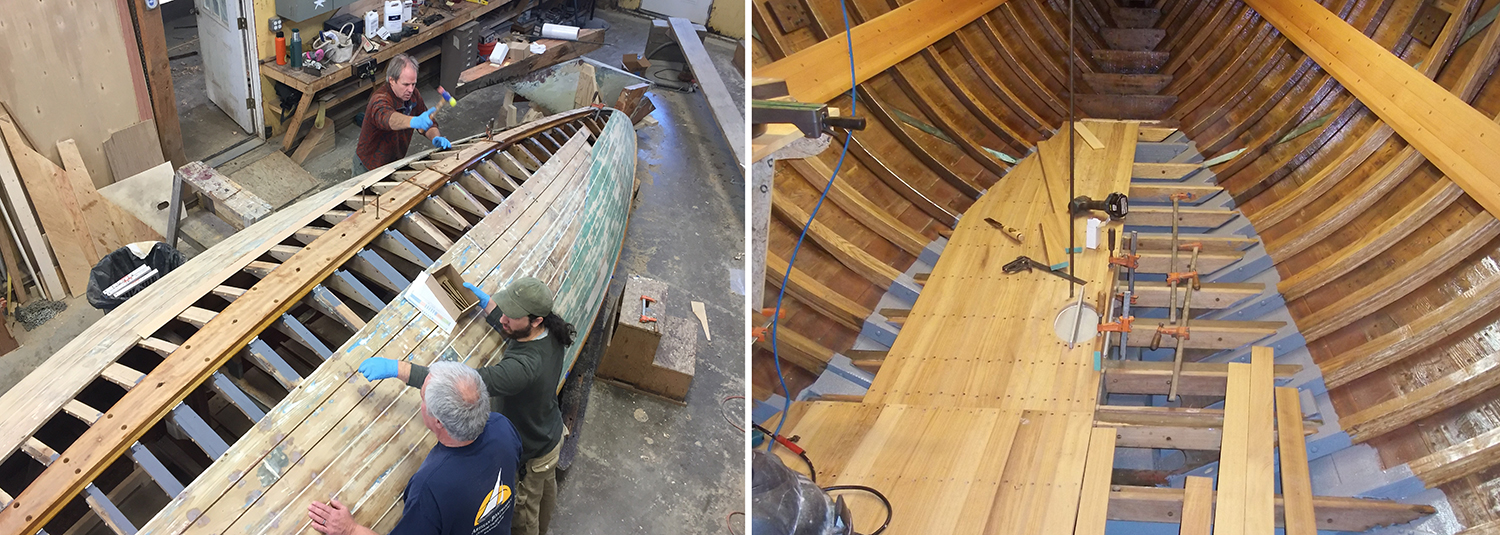

Please verify you are a human
Access to this page has been denied because we believe you are using automation tools to browse the website.
This may happen as a result of the following:
- Javascript is disabled or blocked by an extension (ad blockers for example)
- Your browser does not support cookies
Please make sure that Javascript and cookies are enabled on your browser and that you are not blocking them from loading.
Reference ID: 01086c5d-6c3e-11ef-a4bb-3327f0a3e8df
Powered by PerimeterX , Inc.

Service Locator
- Angler Endorsement
- Boat Towing Coverage
- Mechanical Breakdown
- Insurance Requirements in Mexico
- Agreed Hull Value
- Actual Cash Value
- Liability Only
- Insurance Payment Options
- Claims Information
- Towing Service Agreement
- Membership Plans
- Boat Show Tickets
- BoatUS Boats For Sale
- Membership Payment Options
- Consumer Affairs
- Boat Documentation Requirements
- Installation Instructions
- Shipping & Handling Information
- Contact Boat Lettering
- End User Agreement
- Frequently Asked Questions
- Vessel Documentation
- BoatUS Foundation
- Government Affairs
- Powercruisers
- Buying & Selling Advice
- Maintenance
- Tow Vehicles
- Make & Create
- Makeovers & Refitting
- Accessories
- Electronics
- Skills, Tips, Tools
- Spring Preparation
- Winterization
- Boaters’ Rights
- Environment & Clean Water
- Boat Safety
- Navigational Hazards
- Personal Safety
- Batteries & Onboard Power
- Motors, Engines, Propulsion
- Books & Movies
- Cockpit Confessions
- Communication & Etiquette
- Contests & Sweepstakes
- Colleges & Tech Schools
- Food, Drink, Entertainment
- New To Boating
- Travel & Destinations
- Watersports
- Anchors & Anchoring
- Boat Handling
- ← Lifestyle
Keeping The Past Alive: Restoring Wooden Boats
Advertisement
Meet these passionate boaters who share the same devotion to restoring vintage craft.
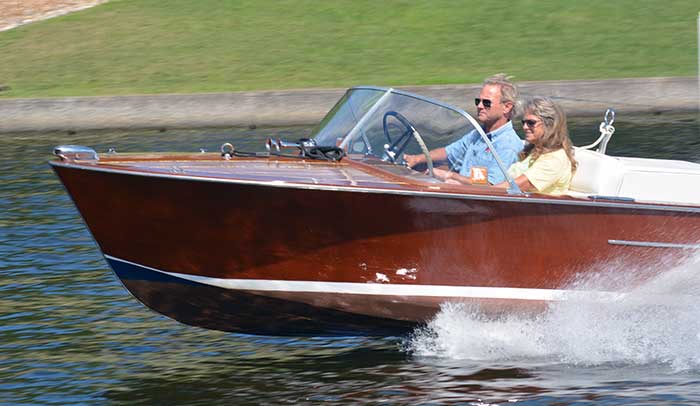
Turning the past into the present: Terry Hart salvages sunken wooden boats, then restores them to their former glory.
As Terry Hart's ski boat knifes through the waves on Lake of the Ozarks, he commands attention. Some boaters steer closer to get a good look. Others wave or honk their horns.
It isn't every day that you see a boat like Hart's on the big lake. His 1961 wooden Chris-Craft ski boat is definitely a showboat, and a magnet for attention on the water.
"This is our go-to-dinner boat," Hart said above the rumbling of the engine. "When we pull up to a waterfront restaurant, people aren't rushing out to look at the million-dollar cruisers that dock there," he says. "They're coming out to look at our old wooden boat."
The ski boat, which Hart named Chug in honor of her past owner's sons, Charles and Doug, is a reminder of the lake's rich past when wooden boats were common. Spot one on Lake of the Ozarks and, chances are, Hart is behind the steering wheel. He's owned as many as 25 classic and antique wooden boats.
Society Of Wood Boat Aficionados
Among a select group of discerning boaters, Kathy Parker would much rather cruise the lake in a vintage boat than a new one.
"Being seen in a vintage boat lets viewers know that you are not just satisfied with the ordinary," says Parker, the interim director of the national Antique and Classic Boat Society (ACBS).
Parker finds it easy to promote the lifestyle her organization is dedicated to. She and her husband, Don, live near Table Rock Lake in the Missouri Ozarks, and they have three vintage boats — a 1965 Carver, a 1954 Chris Craft, and a 1989 Century Arabian.
"We came from Nebraska where there aren't many good boating lakes," Parker said. "Now in retirement years, we get to enjoy living by a lake."
Many others are enjoying that same lifestyle. That is reflected through the ACBS membership, which counts more than 12,000 members nationally and includes almost 100 boats that were built in the 19th century. The oldest was launched in 1860.
How old does a boat have to be before it is considered an antique? The society has five categories:
- Historic: A boat built up to and including 1918
- Antique: A boat built between 1919 and 1942
- Classic: A boat built between 1943 and 1975
- Late Classic: A boat built after 1975 up to the time 25 years prior to the current year
- Contemporary: A wooden boat built in the last 25 years
ACBS is an international organization. There are chapters in the United States, Canada, and France, but there are members from New Zealand, Australia, Bermuda, Germany, England, Iceland, Denmark, Sweden, Puerto Rico, China, Spain, Switzerland, and the Virgin Islands.
The most common vintage boat is a Chris-Craft. But there also are many Century boats. And in the Midwest, Higgins, Lyman, Thompson, and Dunphy are all lapstrake boats that are popular.
The cost and value of antique and classic boats vary widely with the condition they are in when purchased. For example, many collectors pay less than $10,000 for a boat that has been sitting in storage for years and put in the time to restore it themselves. Rare and fully restored boats can cost much higher.
For more information on the ACBS, visit ACBS.org .
— Brent Frazee
"Some people would call me a hoarder," Hart says with a laugh. "I prefer to call myself a collector. I'm just fascinated by these old wooden boats. Each of them has a story." In Chug's case, that story can be traced to the former CEO of 7-Up, who used the boat in Michigan. When the boat was only two years old, he advertised it for sale, and Hart's uncle purchased it and brought it to Lake of the Ozarks, where he and his family used it for about five years. Eventually, Hart's relative fell ill and the boat sat unused for three years.
When Hart purchased the boat, he lifted the cover to find wasp nests and mildew. He later discovered there was some wood rot on the bottom. He brought it back to his shop and spent several months working on it, putting in 1,000 hours of sanding, varnishing, painting, and working on the mahogany. By the time he was done, he and his wife, Sue, were ready to start cruising.
"This boat will go 40 miles per hour, tops. And I sure didn't buy it for its ride. It's a rough-riding boat," says Hart, 64, who lives in Lake Ozark, Missouri. "I love these boats' history, and I was looking forward to really working on one and getting it back to good running shape."
Reclaiming The Past
Hart doesn't have to kick around old storage sheds and barns to find the vintage boats he desires. He owns a long-standing dive and salvage business at the sprawling lake located in central Missouri, and that gives him ready access to the old boats he restores.
"A lot of the boats that we find have sunk from neglect right at the dock. We'll pull them up and we'll buy them from either the owner or the insurance company," he says. "If they're not damaged too badly, they can be saved."
Often, Hart will strip them down and just rebuild them with wood like cedar or oak. So by the time Hart and his crew members are done, boats such as Chug must be worth a lot, right? Well, not exactly. Hart estimates that Chug might be worth $25,000 at most. "One time a guy asked me how much it would take to buy my boat," he says. "I threw out what I thought was a high figure, $13,000, thinking there was no way he would go for it. Well, he did, and I had to back out of it."
The masterpiece of Hart's present collection is a 1926 Lake Union Dreamboat, an ahead-of-its-time cabin cruiser. That boat features a rich wood finish, sliding windows, a cabin with living space, sleeping quarters, and a galley.
"It was being restored on this lake, and the owner had already put $90,000 in it," Hart says. "But he didn't get it done. We saved it from sinking, and the owner didn't want to part it out, so we bought it."
In the winter months, Hart can be found in his workshop, restoring vintage boats. "We do it all," Hart said. "We do the sanding, woodwork, painting, varnishing, upholstery, engine, everything.
"It really is fun to compare what shape some of these boats were in when we got them and how they look after we're done."
A Passion For Wooden Boats
Kevin Hogan and his wife, Jeanne, who live in Olathe, Kansas, are among the many who share a passion for wooden boats. They have displayed their 1958 Century 21-foot Coronado at local boat shows and other events.

"We decided to name it Love Me Timber because it's a wooden boat," Hogan says.
This is the second classic boat Hogan has purchased. A retired industrial-arts teacher, he was looking for a project he could enjoy. He found one when he bid for a 1954 Century Resorter runabout.
"I got it for $2,050," he says.
He also got a big challenge. The boat was stripped, except for the hardware and the engine. So Hogan went to work on his restoration. "It was ready for the burn pile," he says. "Everything was rotten."
It took Hogan 1,200 hours to restore the boat to its stylish self. Then he and Jeanne were able to launch it and get out on the water.
"It was a thrilling moment when we were able to use it for the first time," he said.
The mind of Eugene Lee works in intricate ways, which helps explain how the Tony-award-winning set designer approaches his trade. He hopes to immerse all your senses in the experience of live theater, so you forget about everything else and are completely enveloped in the now. For this man, whose name is most associated with "Saturday Night Live" and "Wicked," television and theater are work. His passion? Owning and restoring wooden boats.
"You know, I've never met a stagehand who didn't love boating," Lee says. "If that's not a sign from the universe that I've chosen the perfect profession and hobby, I don't know what is." Lee's wood fleet totals about 10, including a Concordia 31, a pair of Laurent Giles-designed Vertue sloops, a couple of Herreshoff 12-1/2s, a Herreshoff Buzzards Bay 15, a Beetle Cat, a Pete Culler lapstrake yawl, and a Pulsifer Hampton launch.

Such drama rises from boats: For Tony-award-winner Eugene Lee, theatrical set design and wooden boats go tongue and groove. (Photo: Billy Black)
The 79-year-old Lee, whose career spans more than 40 years, better resembles a Yankee shipwright than a denizen of the Great White Way. Round, clear eyeglasses frame a balding head of gray hair. Red, white, and blue suspenders hold up rugged khakis over his thin frame. Worn-out boat shoes complete the picture. He may be unassuming, but whether advising Steve Martin and Edie Brickell on their Broadway musical "Bright Star," or showing off a scale model of the miniature Manhattan skyline he created for "The Tonight Show Starring Jimmy Fallon," he's still in the thick of A-list entertainment.
Connecting A Fleet Of Passions
Lee commutes into New York City weekly from his home and studio in Providence, Rhode Island, which he shares with his wife, Brooke. Wedged into every square foot, Lee's house and work space are eclectic collections, among them miniature barnyard animals, model skyscrapers, old typewriters, fans, framed prints, wooden stacking toys, T-squares, salt-and-pepper shakers, oars, vintage wooden rulers, giant clothespins, at least one life-size stuffed bear, walking canes, and canisters of pencils. Surrounded by all this stuff, and with the score of "Bright Star" playing on the stereo, he talks about his fleet of wood sailboats.

Eclectic collections are wedged into every corner of Lee's work space. (Photo: Billy Black)
" Jerry Todd , my Herreshoff 12-1/2, was named after a character in my grandfather's books," Lee says. "Named after my father, actually." Lee's grandfather, Edward Edson Lee, was the author of children's books such as Jerry Todd , Pirate , and Jerry Todd and the Oak Island Treasure , under the pen name Leo Edwards. "Ronald Reagan said my grandfather's books were his favorite growing up."
Lee and his twin brother, Tom, spent carefree Wisconsin summers full of DIY projects, shooting sun sights with a sextant, sailing, rowing, and whipping up magic tricks. There was always lots of bustle around Lake Ripley, and lots of boats, which is where Ole Evinrude tested out his great invention, the outboard motor. Summer also gave the boys time to read books by sailors Eric and Susan Hiscock, which sent Lee's imagination soaring beyond the lake, to the challenges of bluewater voyaging.
"I was always interested in Vertues because the Hiscocks sailed Wanderer III , a 30-foot Vertue, around the world," he recalls, then adds, "I'd live on a boat in a second."

Lee aboard Karesta Ferida at the Wickford Shipyard in Wickford, Rhode Island. (Photo: Billy Black)
Years passed, the boys grew, and while Tom got a commission to West Point, Eugene was drawn to sketchpads, isometric drawings, and the theater. He received BFA degrees from Carnegie Tech and the Art Institute Of Chicago, and a Master of Fine Arts from Yale School of Drama.
"I'm just doing now what I was doing in high school, to be honest," Lee says. "It hasn't changed. A lot of the technology of the theater comes from sailing ships. The systems that were used in the theater to fly things involved counterweights and blocks and falls. All that's right out of how the mechanics of theater used to be done.
"Set designers like me, we know a little bit about engineering, but we're not engineers. We do things architects might do, but we're not architects" he says, spreading out drafting paper that contains his storyboard from the musical "Wicked," which would become the blockbuster Broadway hit. "It's a funny profession."
— Elaine Lembo
Related Articles
The truth about ceramic coatings for boats.
Our editor investigates the marketing claims of consumer-grade ceramic coatings.
Fine-Tune Your Side Scan Fishfinder
Take your side-scanning fishfinder off auto mode, and you’ll be spotting your prey from afar in no time
DIY Boat Foam Decking
Closed-cell foam flooring helps make boating more comfortable. Here’s how to install it on your vessel
Click to explore related articles
Brent Frazee and Elaine Lembo
Contributors, BoatUS Magazine
Award-winning BoatUS Magazine is the official publication of Boat Owners Association of The United States. The magazine provides boating skills, DIY maintenance, safety, news and more from top experts.
BoatUS Magazine Is A Benefit Of BoatUS Membership
Membership Benefits Include:
Subscription to the print version of BoatUS Magazine
4% back on purchases from West Marine stores or online at WestMarine.com
Discounts on fuel, transient slips, repairs and more at over 1,200 businesses
Deals on cruises, charters, car rentals, hotel stays and more…
All for only $25/year!
We use cookies to enhance your visit to our website and to improve your experience. By continuing to use our website, you’re agreeing to our cookie policy.
- Wood Restoration
- Surface Cleaning
- Sandblasting
The Art of Wooden Boat Restoration
In a powerboat world that values hi-tech gadgets and speed, it may feel like wood boats are vessels of the past. However, if you have ever seen one in person (or better yet, taken one out on the water), you know there is something special about the details and craftsmanship that goes into a wooden vessel built with passion; each a labor of love that marries skill and creativity. Wooden boats have charm, function and, most importantly, a rich history in the fabric of our ancestors, whose hand-dug canoes and log rafts helped navigate their way of life to create the one in which we live now.
If you find yourself the proud but overwhelmed owner of a vintage wooden watercraft, we are here to help. Owning a boat does come with its own set of challenges, particularly when it comes to maintenance and restoration, but with a little blast media and some TLC, we promise your dingy will have never looked better.
In this blog post, we will explore the commonly used wood types in boat construction, discuss classic wooden boat restoration options and share tips on maintenance to keep your boat afloat for many years to come.

Commonly Used Wood Types in Boat Construction
Before we dive into the methodology of restoring wooden boats, lets cover the commonly used wood types chosen by designers for their strength, durability and workability. Each type will require its own specific treatment for repair, so becoming familiar with the qualities of each is crucial for restoring wood boats.
Mahogany : Resistant to rot and decay, mahogany is ideal for use in the construction of boats and is easily identifiable by its beautiful grain and rich color.
Teak : Thanks to its natural oils that make it resistant to water damage, teak is another wood commonly found in boats. It has proven to be incredibly durable and can withstand harsh marine environments.
Cedar : Cedar is a lightweight and aromatic wood that is often used in boat building for its ease of use and preservation qualities.
Oak : Of the stronger woods used in the structural composition of boats, oak is highlighted by its stability, durability and resistance to water damage.
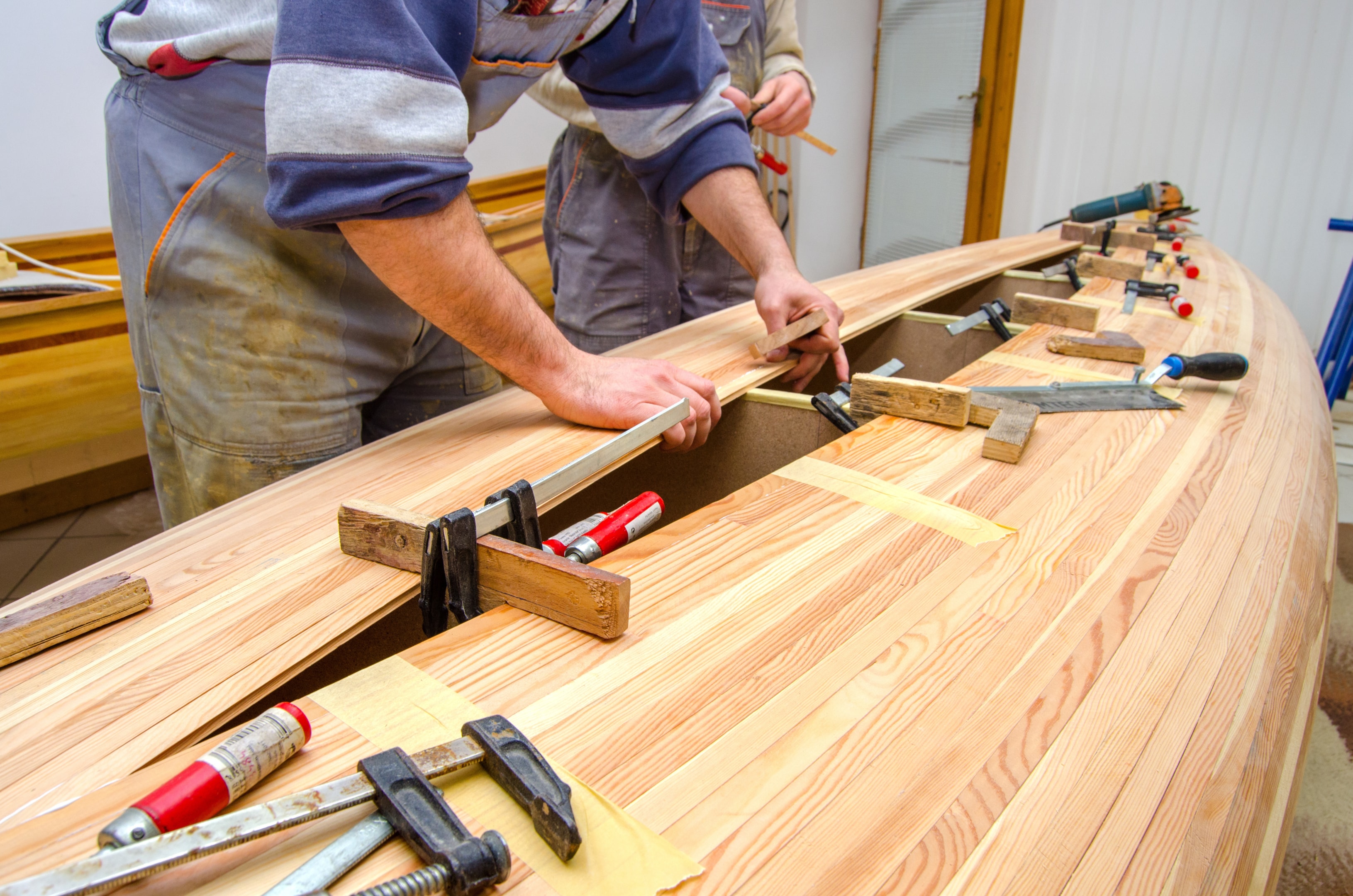
Methodology of Classic Wooden Boat Restoration
Restoring an old wooden boat can be a meticulous process that may involve stripping away layers of paint to repair any damage underneath and then taking precautions to preserve the restored wood.
Step One: Assessing the Boat
The first step is assessing the condition of the boat. This includes checking for rot, cracks, and any other structural issues that are in a state of disrepair like damaged planks or joints that need to be replaced.
Step Two: Stripping the Boat
Once the condition of the boat has been assessed, the next step is to remove the old paint and varnish. Paint can be stripped using a variety of tools, including heat guns, chemical strippers, scrapers, sanders or hand grinders. However, these traditional techniques have been known to be time consuming and can produce imperfect finishes. It is important to be gentle when stripping the paint to avoid inflicting any additional damage to the wood underneath, so sensitivity to the condition of the boat is key.
Pro Tip : One method that has proven time and time again to be effective in removing paint, varnish and stain without damaging the wood underneath is abrasive media blasting, otherwise known as sandblasting or dry blasting. We talk more about this method and how Dustless Blasting can make your surface preparation a breeze a bit later in this article. To learn about the basics of abrasive media blasting, visit our website by clicking here.
Step Three: Repairing the Boat
After the paint has been removed, any necessary repairs should be made. This may include replacing rotted wood, repairing cracks and re-caulking seams. Once the repairs have been completed, the boat boards can be sanded to the desired shape and treated with a high-quality marine varnish to protect the wood and give it a beautiful finish and/or to prepare it for painting. Be sure to follow the manufacturer instructions for proper application and sealing techniques.

Tools Used to Strip Paint from Wooden Boats
Heat Guns: These are commonly used to soften the paint so that it can be easily scraped away.
Scrapers & Sanders: These hand tools can be used to remove paint, depending on the size of the boat, the condition of the paint and how many layers there are.
Sandblasting (Dry Blasting): For larger boats or boats with multiple layers of paint, sandblasting may be the most effective method versus sanding or heat guns. Sandblasting uses compressed air to propel sand particles at high speeds, effectively removing paint without damaging the wood underneath.
For more information on sandblasting wood, click here.

Advantages of Sandblasting in Boat Restoration
Sandblasting offers several advantages for revamping worn and weathered boats. It is a quick and efficient method of stripping paint, making it ideal for larger boats or boats with many years worth of paint layers. Sandblasting also allows you the control to remove paint evenly, ensuring a smooth surface for refinishing and a higher quality finished project.
Another advantage of sandblasting is that it does not use harsh chemicals, making it environmentally friendly. Dustless Blasting allows you to minimize the spread of spent media and the coating removed, making containment and cleanup quick and easy and ensuring the safety of the surrounding environment.
Sandblasting is a powerful and efficient surface preparation tool for boats made of wood, but it can be used in all kinds of others applications as well. If you happen to be in the marine industry and need a solution for fiberglass, steel and metal boats, this solution can help tackle all of those and more. Take a look at the endless opportunities with the Dustless Blasting equipment by clicking here.
Tips and Tricks for Sandblasting Wooden Boats
Safety first: Before you start sandblasting, make sure to wear protective gear such as goggles, gloves, and a mask to prevent injury from flying debris.
Choose the right equipment and sandblasting media: When sandblasting wood, it's important to use the right equipment for the job. Make sure to select the appropriate abrasive material for your wood surface. We recommend crushed walnut shells or corn cob for wood applications. Also, consider the size and pressure of the sandblasting nozzle to ensure even and effective coverage.
To read more about abrasive blasting media and which are best suited for your particular application, click here.
Test blast: Before sandblasting the entire wood surface, test the equipment on a small, inconspicuous area to ensure that it doesn't cause any damage or splintering. Adjust the pressure and nozzle distance as needed to achieve the desired results.
To learn more about sandblasting nozzles and how to choose the right one for your project, click here.
Keep the nozzle moving: When sandblasting wood, it's important to keep the nozzle moving at a consistent pace in a sweeping motion to prevent over-sanding in one spot.
Click here to see how Dustless Blasting pros make paint and stain fly off of logs without compromising the wood underneath.
Clean and prep the wood: After sandblasting, use a vacuum or compressed air to remove any remaining abrasive material and debris, then sand the wood lightly to smooth out any rough spots before painting or sealing.

How to Prolong the Life of Wooden Boats
To prolong the life of any wooden structure, proper maintenance is key. Regularly inspecting the boat for signs of rot, cracks and other damage can help prevent costly repairs. Keeping the boat well-varnished and/or sealed creates a protective barrier, and protecting it from the elements can help extend its lifespan as well. The frequency of refinishing will depend on factors such as the type of wood used, the climate in which the boat is stored, and how often the boat is used.

By understanding the commonly used wood types in boat construction, knowing how to maintain and restore your vessel, and following best practices for its care, you can enjoy your ship for years to come. Whether you are restoring wood boats as a hobby or as a career, our recommendation is to look into abrasive media blasting as the tool you turn to for your restoration needs.


IMAGES
VIDEO
COMMENTS
Labor: Decide which tasks you can handle yourself and which will require professional help.; Timeline: Set a realistic schedule for the restoration, keeping in mind the availability of parts and your own time.; 3. Budgeting for the Restoration. A crucial part of the planning process is setting a budget. Boat restorations can range from a few hundred dollars to tens of thousands, depending on ...
Are you a boat captain asked to restore old boat or yachts? Are you a yacht captain who appreciates sailboat aesthetics, good craftsmanship and wants to help create a floating masterpiece? Whether this is a do it yourself project or it is for your client, this is what to know before restoring a boat. ...
The electrical and plumbing systems on a classic sailboat may require updating or replacement to meet modern standards and ensure safety and reliability. Inspect the wiring, switches, and electrical components for signs of wear or damage, and replace any outdated or faulty parts. Plumbing systems should be checked for leaks, corrosion, or other ...
Let's discuss why people choose to restore their boats: 1. Cost Compared to Buying New. Aside from sentimental value, many people opt for restoration because it's cost-effective compared to purchasing a new boat. While material expenses can accumulate, they don't compare to the hefty price tags of brand-new boats.
Feb 9, 2022. Returning an older boat to like-new condition is usually less costly than buying a new one, and it'll make you the envy of the marina. You know you're getting old when things you owned as a young man are now considered "classic.". The 289 Mustang I abused back in the early '70s today might be—after the application of ...
Inspect the boat and identify any problems with the exterior. Contact a boat inspection service and have them go over the boat to confirm the final issues involved with your restoration project. Drain the fuel tank and remove the engine from the boat. Drain the gear case of the old oil.
Then break it down into phases to make the overall project less daunting. Tracking your working. time in hours keeps focus and doesn't punish you for life getting in the way. I made a game of it by tracking my active work-on-the-boat time in hours with an app called Toggl.
Do your research, grow, and learn new skills. Visit your local library. Several very good books on sailboat restoration are available and your local library probably has many of them. Start by checking out Don Casey's books . They are easy to read, easy to follow, and are generally filled with sound advice .
Our sailboat restoration continues as we completely restore the teak wood in our cockpit (and eventually all the wood on deck). We have a friend a few boats ...
LandCraft® is one of the only facilities in the Midwest to offer complete boat remodeling and refitting (restoration) services! Our team specializes in fiberglass/gelcoat repair and can either rejuvenate existing gelcoat or re-gelcoat your boat, including the addition of new or custom paintwork or decals. Our woodworking department can restore ...
Please join us for today's Fourth of July special video as we completely restore this damage boat to back to new condition. Throughout this journey of rebuil...
1. Wet the teak down; 2. Apply part one (the caustic), spreading and lightly scrubbing with a bristle brush; 3. When the surface is a uniform wet, muddy brown, apply the second part (the acid), spreading with a clean bristle brush; 4. Apply and spread enough of the acid to turn the teak a uniform tan; 5.
Well, here's a few weeks of work compacted into a 18min video. We really want to focus on quality over quantity with our videos. Meaning, less fluff and more...
Here are 11 tips to keep in mind when restoring an older boat. 1. Take an inventory of your tools, and then roll up your sleeves and start. It's that simple. 2. Clean the boat from stem to stern so you can see exactly what you have to work with. 3. Remove all the water, leaves and debris from the boat.
Websites such as Craig's list, eBay and Boat Trader Online are great resources to find older boats to restore. Restoration Tips . As long as the main structure of the boat is intact, restoration of other parts of a sailboat will be relatively easy and enjoyable. Begin by inspecting the boat from stem to stern (front to back).
2. Create a Detailed Plan. A well-thought-out plan is essential. Take the time to assess the boat's condition and identify areas that require attention. Create a checklist of tasks, including materials and tools needed. A comprehensive plan will prevent impulse purchases and keep you on track. 3.
As an example, you may buy a tired-looking 30-foot boat for $30,000. Add on around $25,000 for the restoration work carried out by skilled trades, plus $15,000 for your own time—a total cost of approximately $70,000. Compared to the price of a new 30-foot yacht of around $120,000, that's quite a saving. On the flip side, the resale value of ...
There are many reasons to restore a boat, and many legitimate approaches to a restoration. Excellence in restoration typically involves understanding what is appropriate to the boat's time period and what isn't. For many clients, we restore original boats using classic materials and techniques exactly as they were 100 years ago.
Step Three - Polish It. Star brite's premium marine boat polish is great for light oxidation with no hard rubbing required. Remove the oxidation and restore the shine. Unless your boat is very new, it most likely will have some oxidation. Light oxidation manifests itself as a slight dulling of the gelcoat.
Today I restore this 11ft sailboat. From what I can put together, its from the mid 1960s, and has been repainted once before. Thanks to a viewer, I believe w...
Meet these passionate boaters who share the same devotion to restoring vintage craft. Turning the past into the present: Terry Hart salvages sunken wooden boats, then restores them to their former glory. As Terry Hart's ski boat knifes through the waves on Lake of the Ozarks, he commands attention. Some boaters steer closer to get a good look.
In a powerboat world that values hi-tech gadgets and speed, it may feel like wood boats are vessels of the past. However, if you have ever seen one in person (or better yet, taken one out on the water), you know there is something special about the details and craftsmanship that goes into a wooden vessel built with passion; each a labor of love that marries skill and creativity.
This episode I'm restoring sailboat teak from the interior of my Skipper 20 pocket sailboat. When you restore an old sailboat, its important to refinish the ...
Abandoned and left to rot I take this old aluminum boat and restore it into the ultimate fishing boat. Watch as I replace the old plywood floors, repair the ...